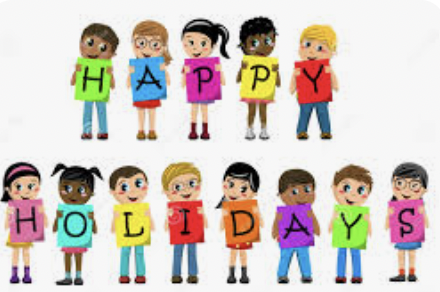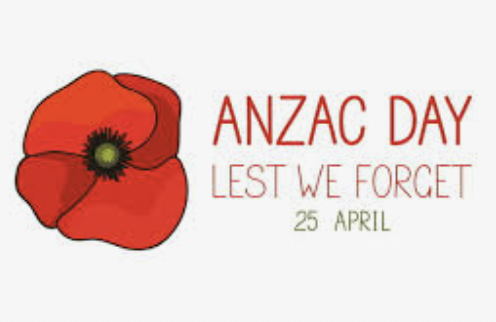8C1 Science
Section outline
-
-
Opened: Monday, 13 May 2024, 9:00 AMDue: Friday, 31 May 2024, 3:00 PMFor the purpose of this assessment, students will investigate a scientific question and use the Scientific Method to represent their information.
-
Opened: Tuesday, 3 September 2024, 12:00 AMDue: Saturday, 13 September 2025, 12:00 AM
For the purpose of this Assessment students will research a planet in the solar system and record their information. Students will also illustrate the the Earth and its components using a scale to show the distances.
-
-
Kia Ora Students,
Welcome to your Science learning for 2024. We begin the year with the topic Aotearoa by exploring and classifying things in our surroundings.EXPLORE / TŪHURA learning intentions:
- We are EXPLORING...the context of ‘Aotearoa, 'the home we make it to be where everyone counts’ by classifying the things that surround us.
SC:
Conduct observations to distinguish similarities and differences on items.
Arrange groups of objects based on shared characteristics.
Explain the difference between classification, taxonomy and species.
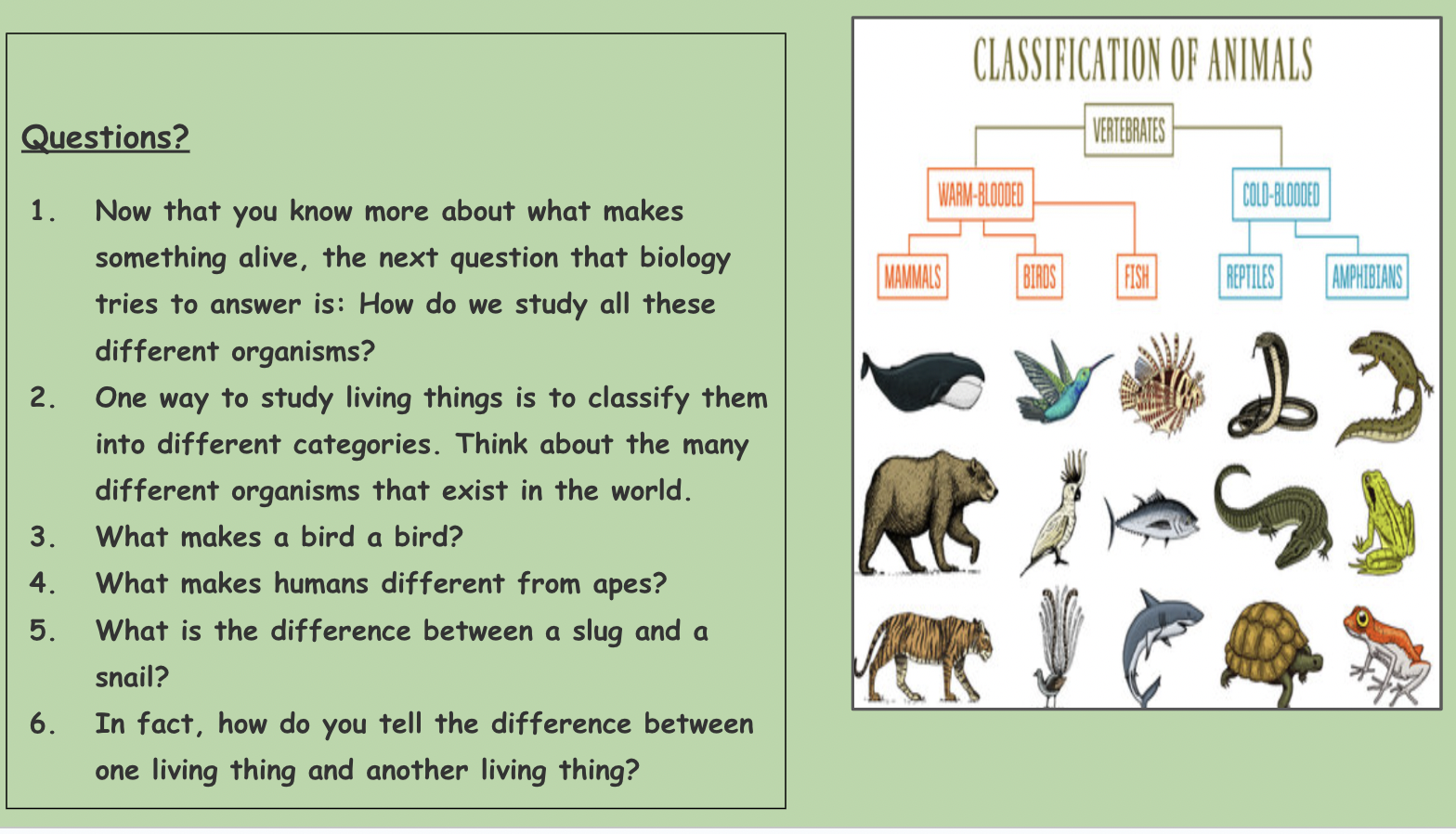
-
Kia Ora Students,
Learning for week 3EXPLORE / TŪHURA learning intentions:
- We are EXPLORING...the context of identities & communities by sorting living things into groups based on similarities.
SC:
Observe organisms and sort them into groups.
Interpret scientific vocabulary.
Identify the 6 animal kingdoms.
- .Activities-Link to Google Classroom
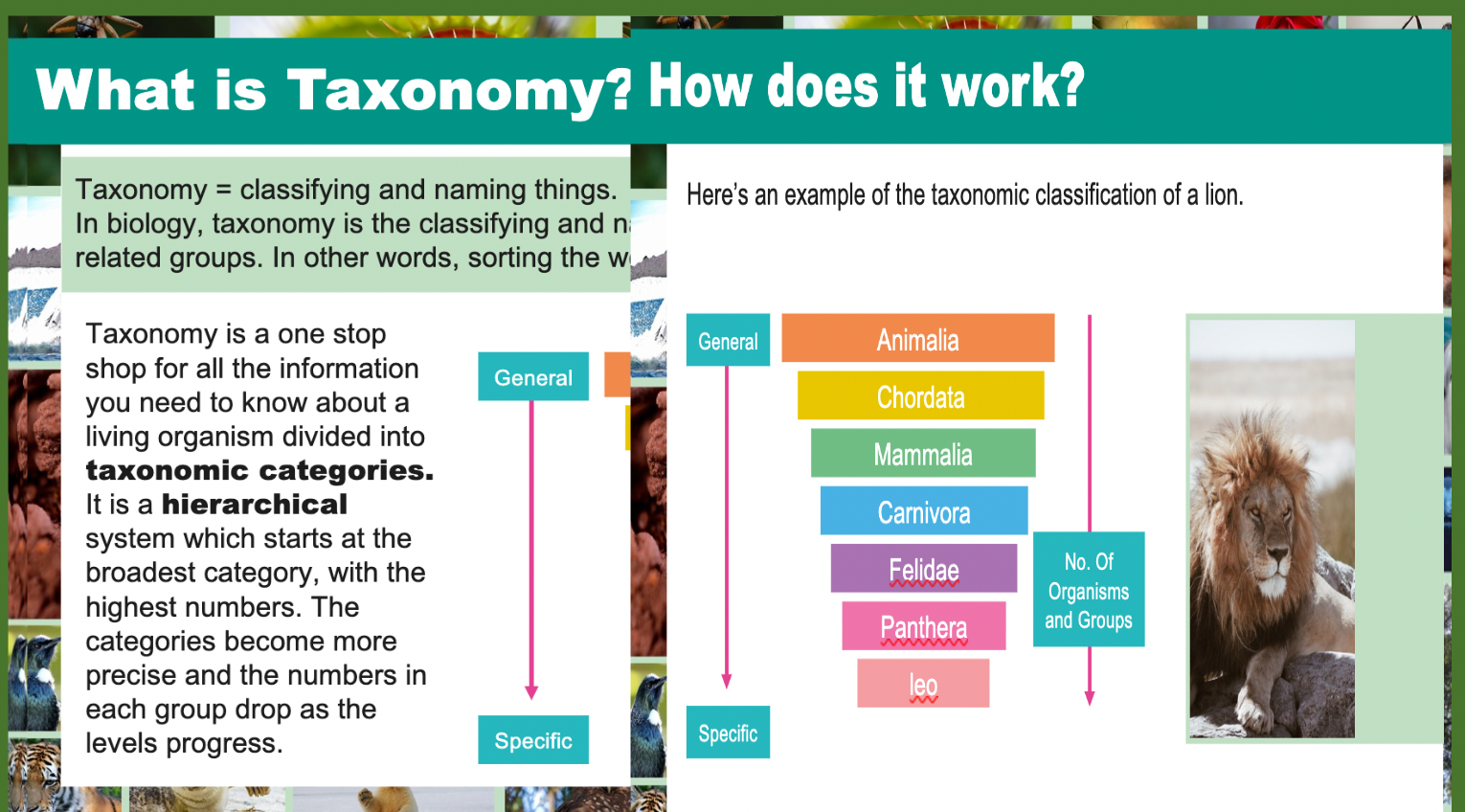
-
Kia Ora Students
This week we will take a closer look at each of the living Kingdoms.EXPLORE / TŪHURA learning intentions:
- We are EXPLORING...communities and belonging by identifying organisms and their function in each kingdom.
- SC:
Draw and label a plant and an animal cell.
Compare and contrast organisms in each kingdom.
Explain scientific vocabulary in my own words.
- Activities-Link to Google Classroom
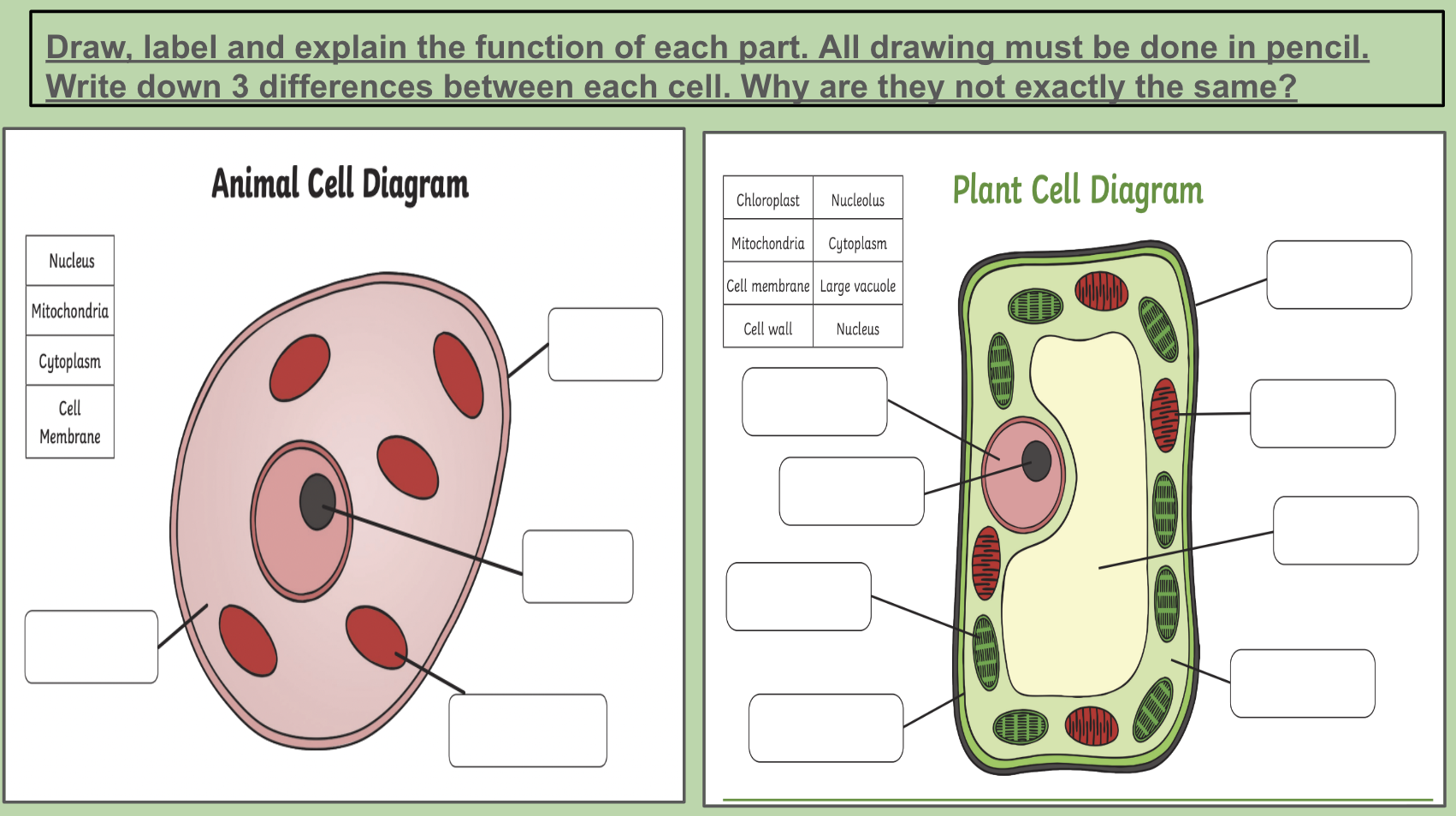
- We are EXPLORING...communities and belonging by identifying organisms and their function in each kingdom.
-
PLAN & DO / WHAKAMAHI learning intentions:
- We are PLANNING... to use a microscope so that we can...identify the parts of an onion plant cell.
SC:
Identify the parts of a microscope.
State the function of the main parts.
Complete a simple procedure by following instructions.
Evaluate my results and draw a conclusion.
Activities
www.youtube.com/watch?v=dxv4M4HHUgs
1. With knife, cut onion and peel one thin layer of onion cells from between two thick layers of onion.
2. Cut small piece of thin onion layer off and place onto glass slide.
3. Add drop of iodine onto onion with pipette.
4. Drop coverslip onto slide and gently press down (without breaking it).
5. View under microscope.
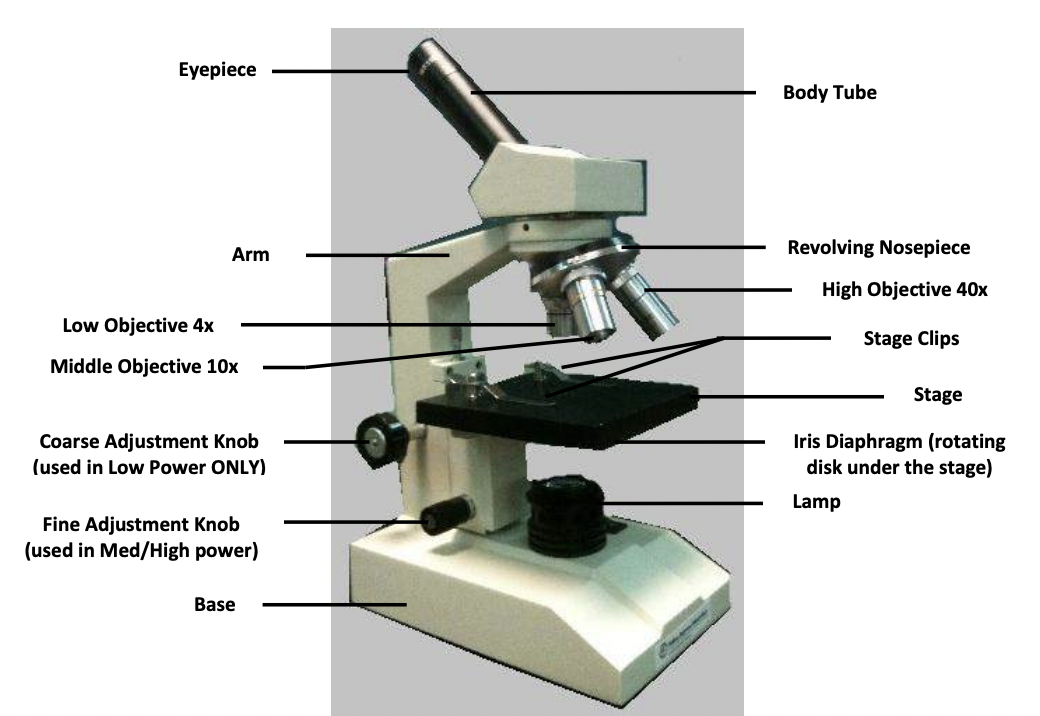
-
Welcome to week 6.
FOCUS / ARONGA learning intentions:
- We are FOCUSING... microscopic organisms within our community.
SC:
Complete a simple investigation by following instructions.
Record my results and compare them with others.
Explain scientific vocabulary in my own words.
Google Classroom - Link to Activities
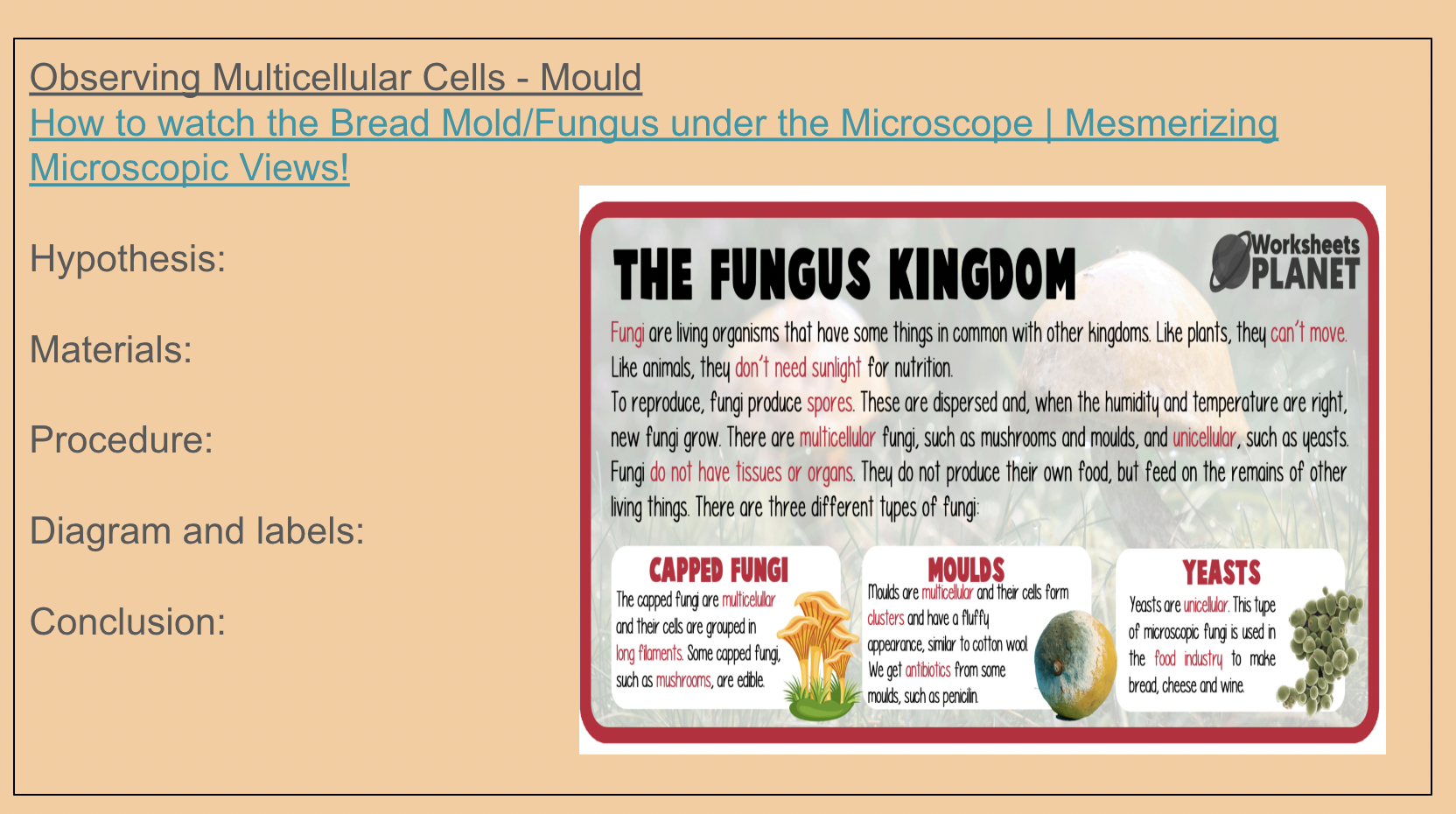
-
Kia Ora Students,
FOCUS / ARONGA learning intentions:
We are FOCUSING on... organisms within our community.
SC:
Compare and contrast organisms in each kingdom
Explain scientific vocabulary in my own words.
Identify vertebrates and invertebrates.
Activities-Link to Google Classroom
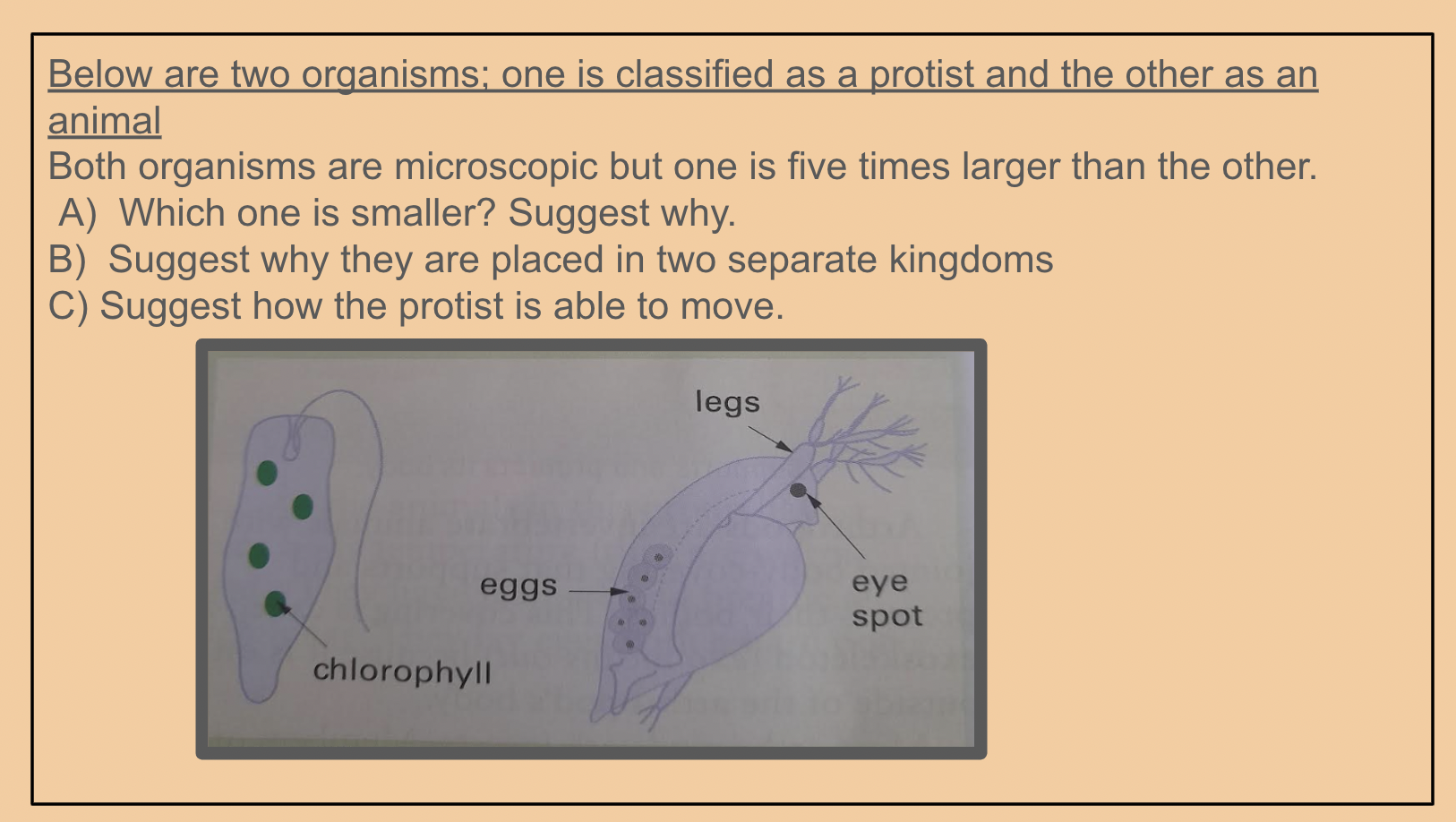
-
Kia Ora Students
PLAN & DO / WHAKAMAHI learning intentions:
- We are PLANNING...to classify NZ native vertebrates so that we can...
appreciate our surroundings.
SC:
Draw and label the important features of the animal.
Describe the characteristics/appearance and diet of the vertebrate.
Explain how the animal adapts to its environment.
Identify the animal name in Te Reo.
Activities-Link to Google Classroom
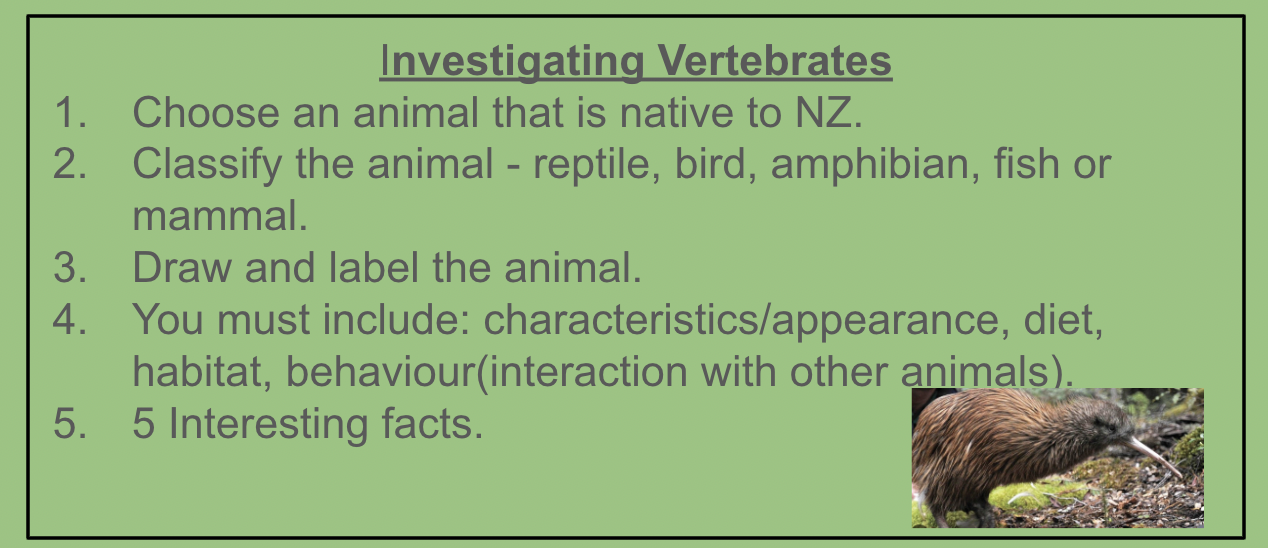
- We are PLANNING...to classify NZ native vertebrates so that we can...
-
Kia Ora Students
PLAN & DO / WHAKAMAHI learning intentions:
- We are PLANNING...to classify NZ native vertebrates so that we can...
appreciate our surroundings.
SC:
Draw and label the important features of the animal.
Describe the characteristics/appearance and diet of the vertebrate.
Explain how the animal adapts to its environment.
Identify the animal name in Te Reo.
Complete a Brainpop
Present my work to the class: Slide show of the Native animal.
Activities-Link to Google Classroom
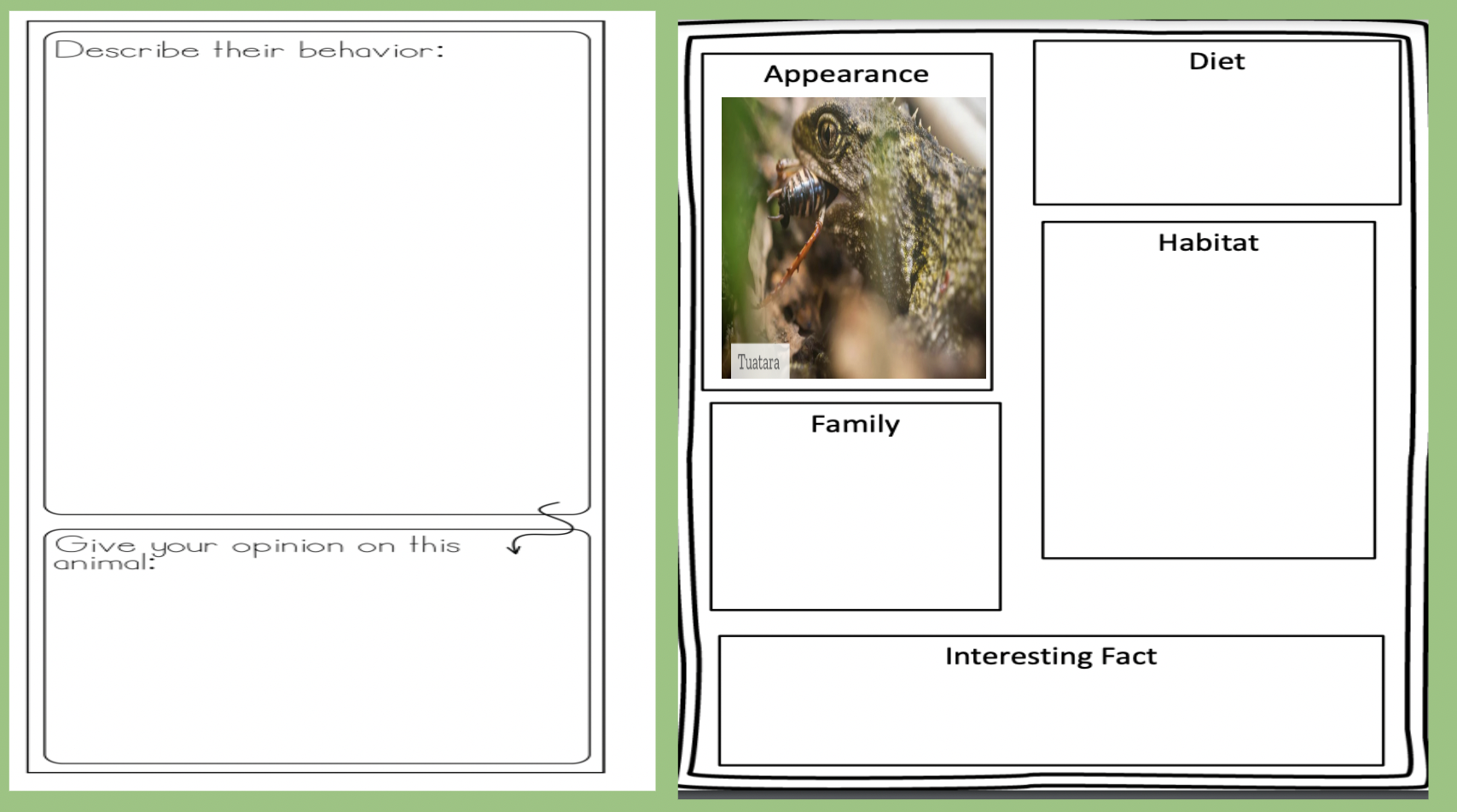
- We are PLANNING...to classify NZ native vertebrates so that we can...
-
Kia Ora Students
PLAN & DO / WHAKAMAHI learning intentions:
- We are PLANNING...to investigate native invertebrates so that we can understand the importance/function of all organisms within our communities.
SC: Conduct a practical investigation with my peers.
Identify and classify invertebrates.
Compare and discuss my findings with other groups.
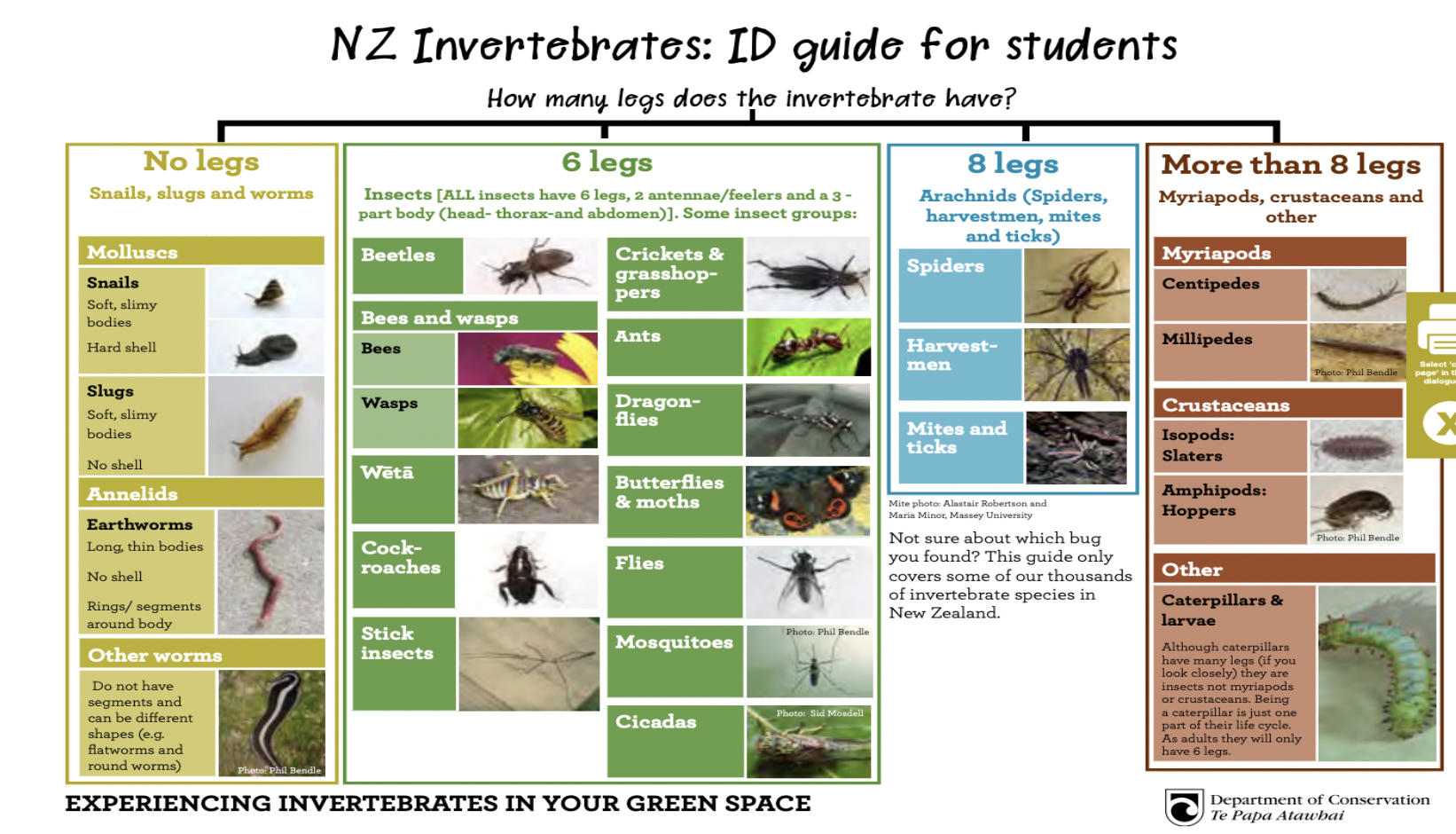
- We are PLANNING...to investigate native invertebrates so that we can understand the importance/function of all organisms within our communities.
-
Kia Ora Students
PLAN & DO / WHAKAMAHI learning intentions:
- We are PLANNING...to investigate native invertebrates so that we can understand the importance/function of all organisms within our communities.
SC: Conduct a practical investigation with my peers.
Identify and classify invertebrates.
Compare and discuss my findings with other groups.
Draw and explain the life cycle of a native insect.
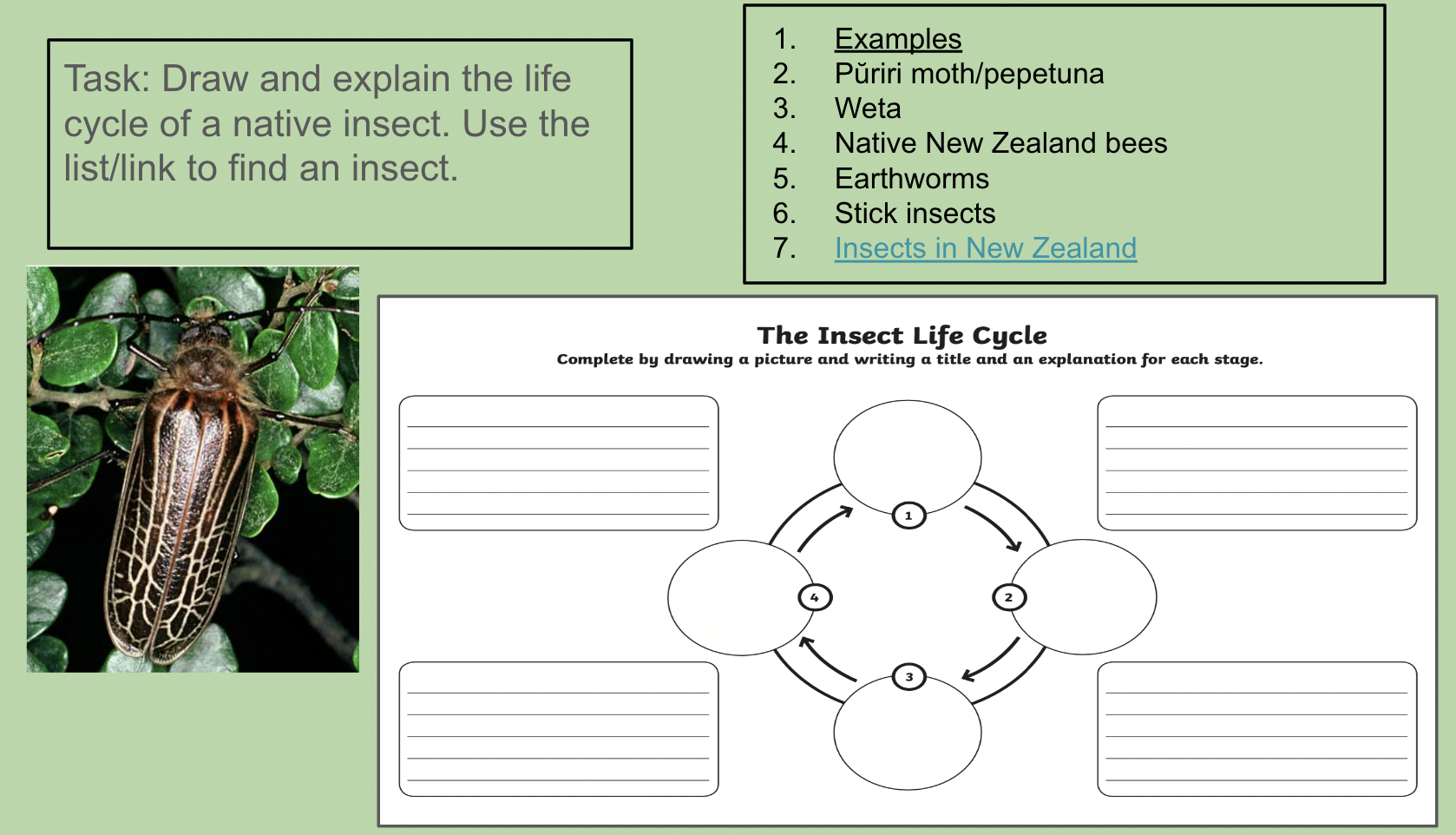
- We are PLANNING...to investigate native invertebrates so that we can understand the importance/function of all organisms within our communities.
-
Kia Ora Students Welcome back. Our context for term two is:
EXPLORE / TŪHURA learning intentions:
- We are EXPLORING...
the context ‘stand up, stand out’ by investigating a research question to collect data and recognise how it can be applied to the “real world”.
- SC:
Explain why I have decided to undergo this scientific investigation and the relevance of it in the ‘real world’.
Identify the aim of my investigation.
Predict the outcome of my investigation through my hypothesis
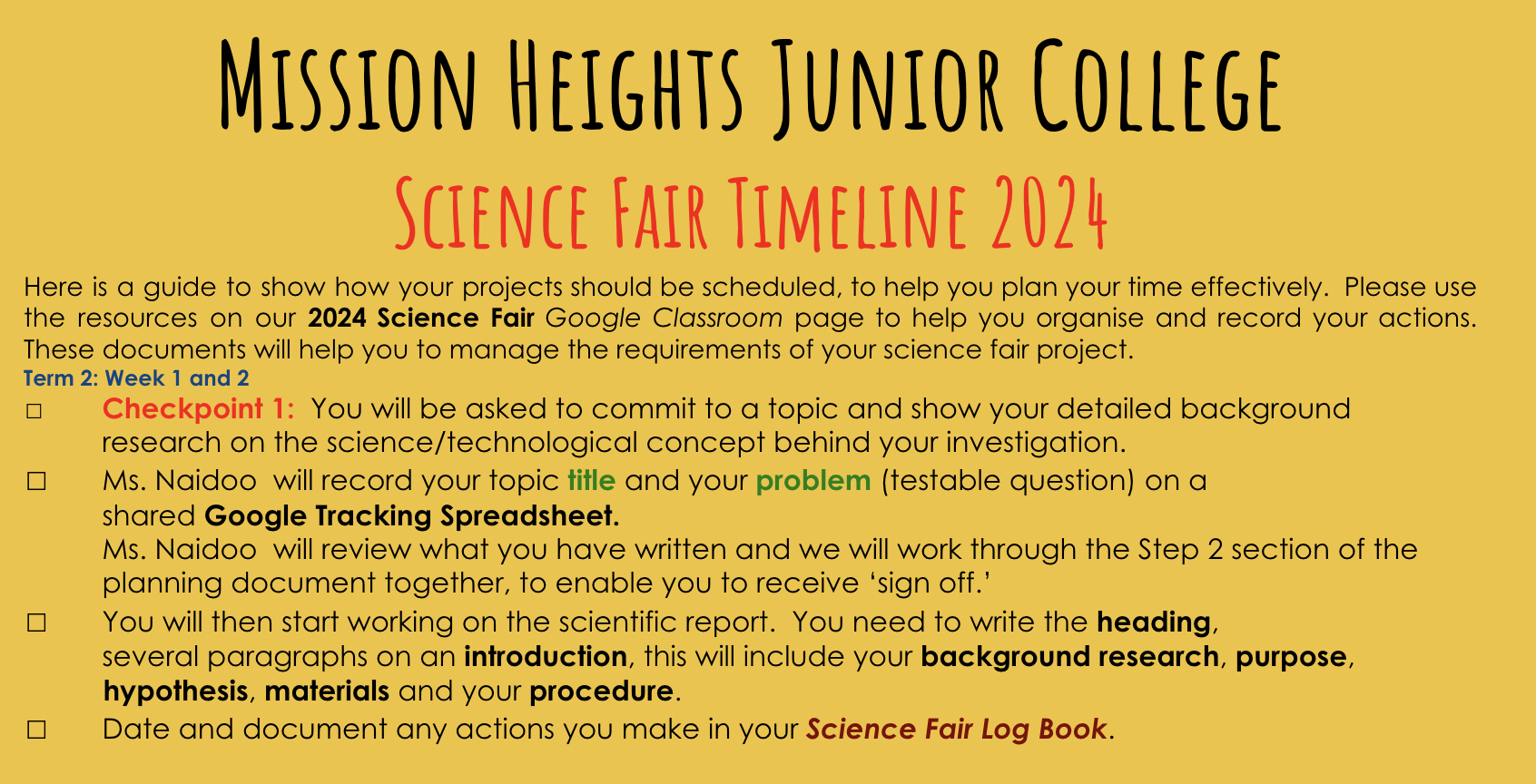
- We are EXPLORING...
-
Kia Ora Students, Welcome to Week 2,
FOCUS / ARONGA learning intentions:
- We are FOCUSING...the context of ‘Stand up, Stand out’ by identifying how to test a research question and describing the data gathered.
- Success Criteria:
Identify the aim of my investigation.
Predict the outcome of my investigation through my hypothesis
Identify the equipment needed to test my hypothesis.
Discuss the importance of fair testing and examine how the control, apparatus, and variables can modify an experimental outcome.
Developing necessary skills for my science fair investigation.
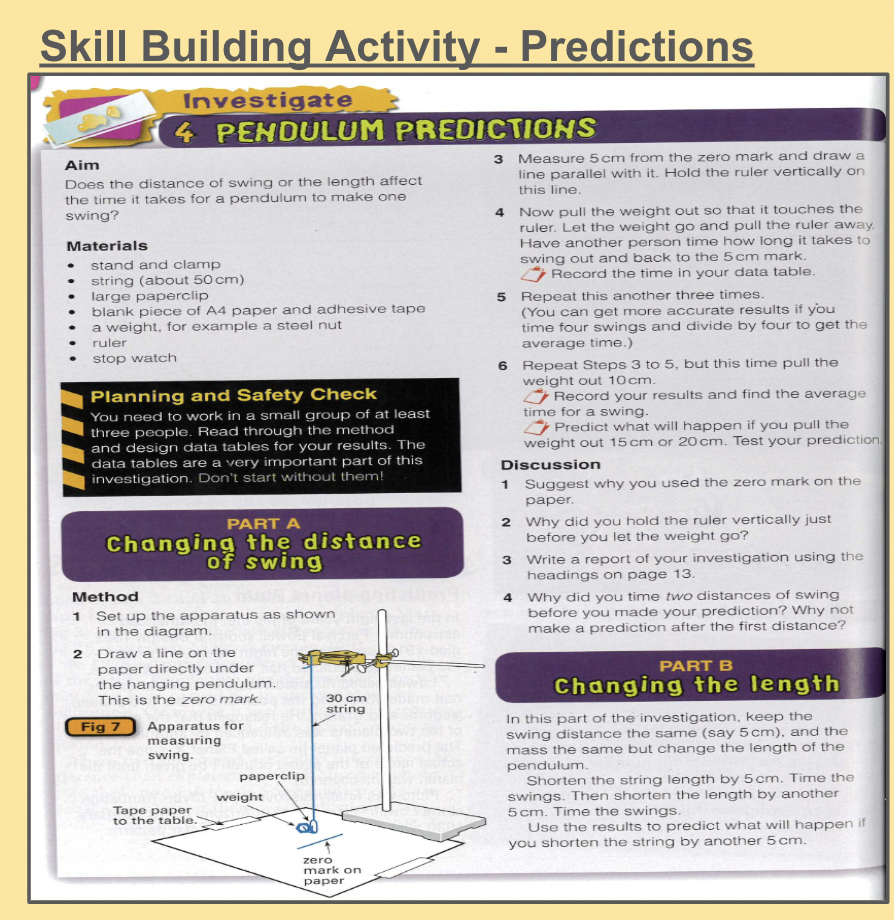
-
Kia Ora Students,
This week we will be working on the skills necessary for completing the Science Fair Investigations.
PLAN & DO / WHAKAMAHI learning intentions:
- We are PLANNING...to apply our method so that we can...gather data to investigate our research question.
Success Criteria:
Identify the equipment needed to test my hypothesis.
Discuss the importance of fair testing and examine how the control, apparatus, and variables can modify an experimental outcome.
Describe the steps needing to be followed to test my science fair investigation.
Discuss the importance of fair testing and examine how the control, apparatus, and variables can modify an experimental outcome.
- Describe the steps needing to be followed to test my science fair investigation.
Activities-Link to Google Classroom
-
Kia Ora Students
PLAN & DO / WHAKAMAHI learning intentions:
- We are PLANNING.. to apply our method so that we can gather data to investigate our research question.
Success Criteria
Test my science fair investigation and apply changes to improve my method if needed.
Develop the practical skills necessary to write up a science fair report.
Examine my results and draw conclusions.
Google Classroom - Link to Activities - We are PLANNING.. to apply our method so that we can gather data to investigate our research question.
-
Kia Ora Students,
This week you will finalise and submit your Science Fair Investigation
PLAN & DO / WHAKAMAHI learning intentions:
- We are PLANNING...to draw conclusions from our fair testing investigations and interpret the data gathered to answer our hypothesis.
- Success Criteria:
Test my science fair investigation and apply changes to improve my method if needed.
Develop the practical skills necessary to write up a science fair report.
Construct graphs and analyse my data.
Define and label the structure of an atom.
Compare and contrast differences between compounds and elements.
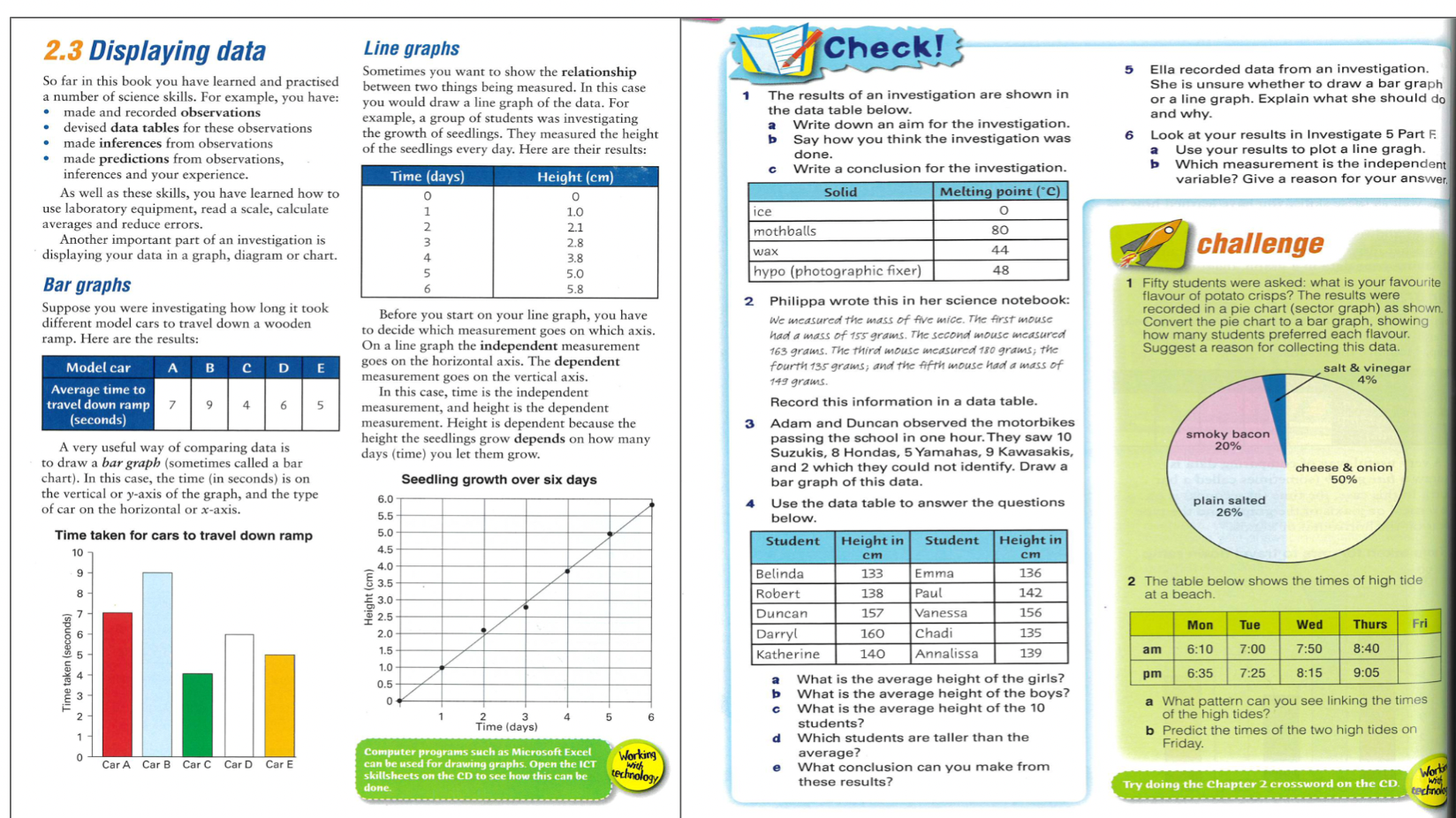
-
EXPLORE / TŪHURA learning intentions:
- We are EXPLORING...the context of Empowerment’ by observing the chemical and physical properties of different materials.
- Success Criteria:
Define an atom.
Draw and label the structure of an atom.
Compare and contrast differences between compounds and elements.

-
Kia Ora Students,
EXPLORE / TŪHURA learning intentions:
- We are EXPLORING...the context of Empowerment by classifying elements according to their properties
- Success Criteria
1. Explain how elements are classified.
2. Identify elements in the periodic table.
3. Locate the atomic and mass number of an element.
4. Calculate the mass number of elements.
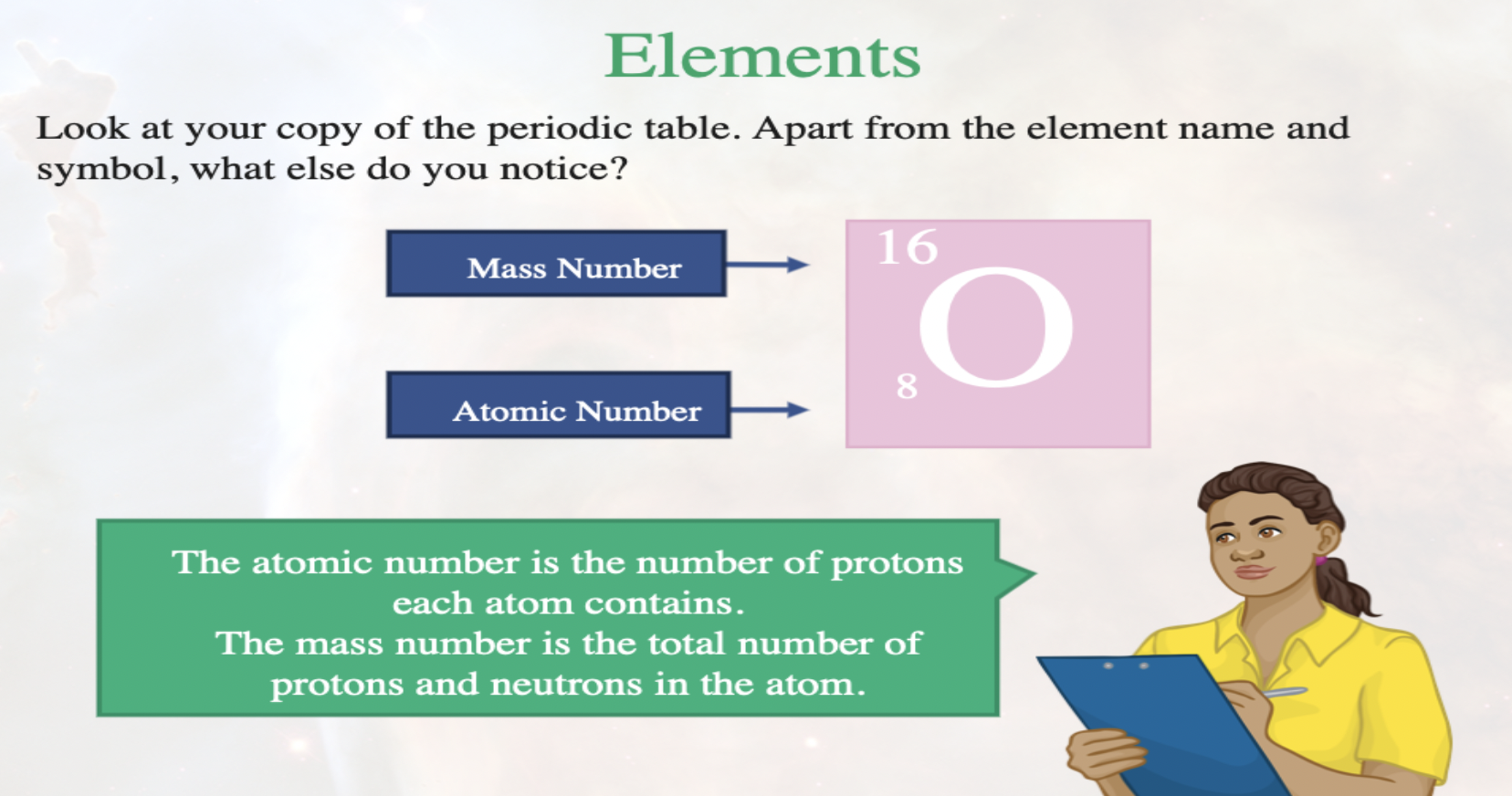
-
Kia Ora Students,
FOCUS / ARONGA learning intentions:
- We are FOCUSING...the context of ‘Empowerment’ by comparing atoms, molecules and compounds.
- Success Criteria
Create an edible atom(including the element name, proton, neutron, electrons)
Calculate the mass number of an element.
Identify basic chemical formulas, and explain where they are found/created in the real world.
Explain the differences between elements and compounds.
Google Classroom - Link to Activities
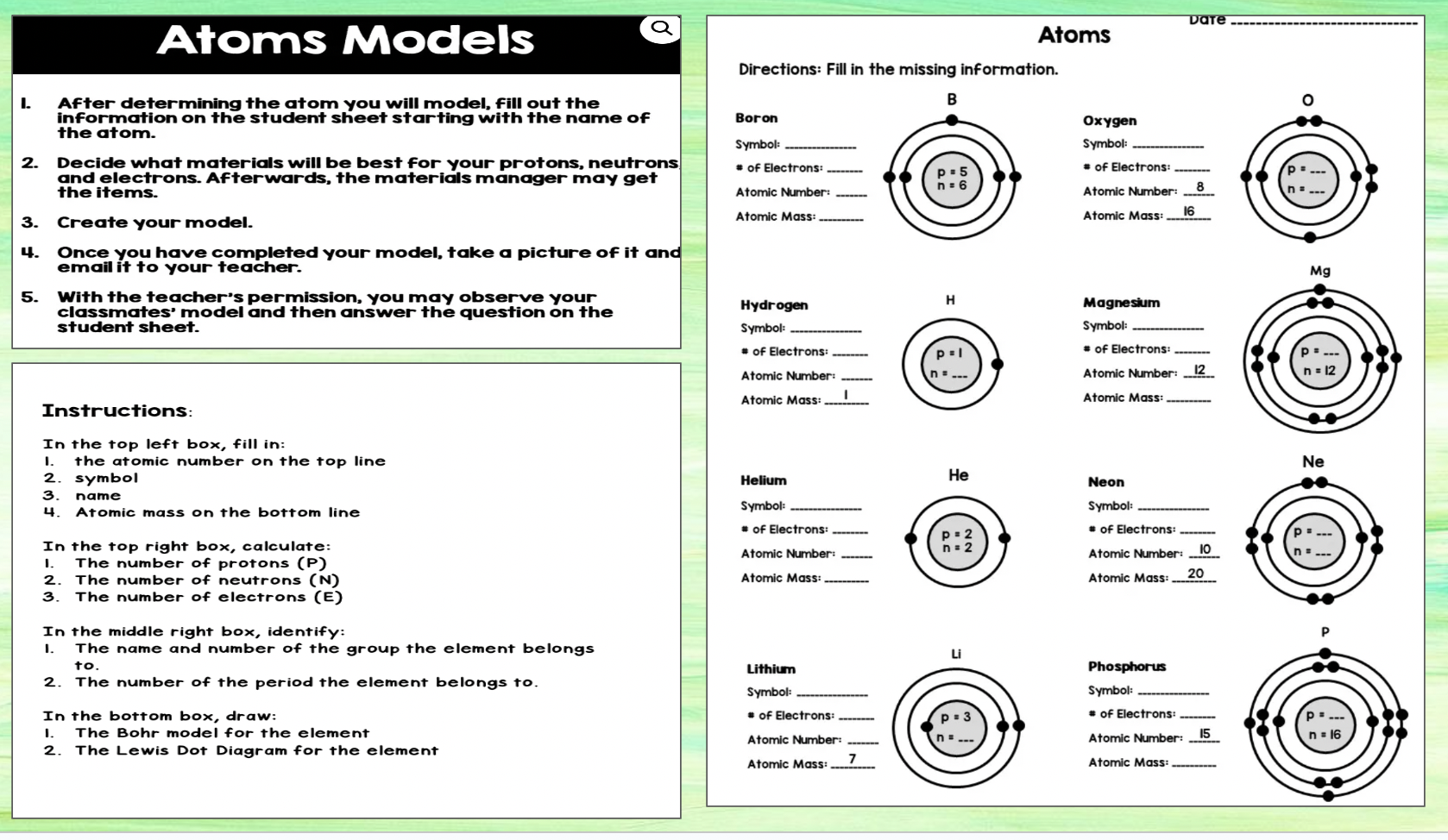
- We are FOCUSING...the context of ‘Empowerment’ by comparing atoms, molecules and compounds.
-
PLAN & DO / WHAKAMAHI learning intentions:
- We are PLANNING...to create a timeline of the periodic table so that we can...acknowledge and appreciate the science and people involved.
Success Criteria
Classify facts based on time occurrences.
Describe the different periodic tables(past to present)
Name the people who were involved in the history of the periodic table.
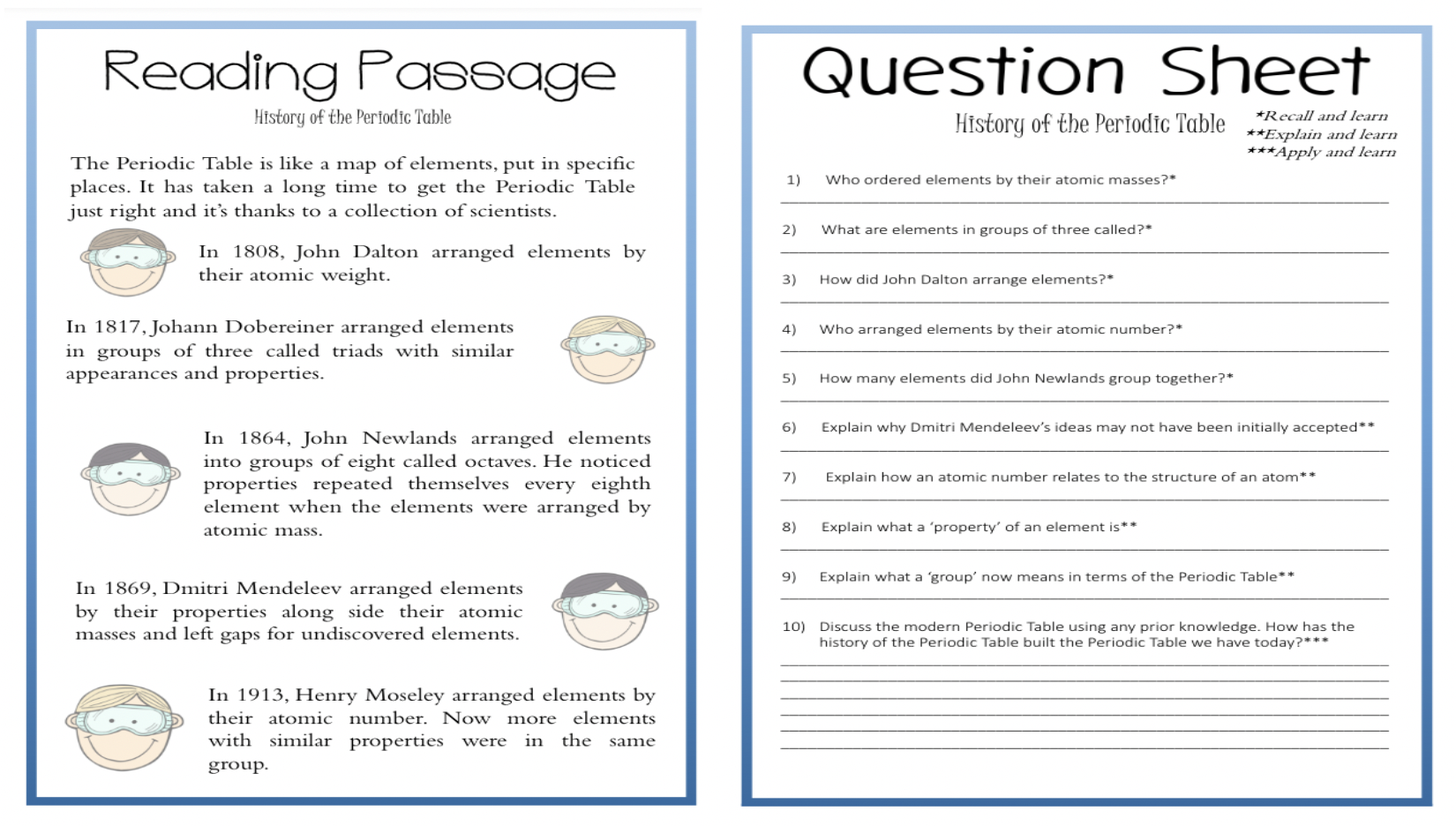
-
PLAN & DO / WHAKAMAHI learning intentions:
- We are PLANNING...to create a timeline of the periodic table so that we can...acknowledge and appreciate the science and people involved.
Success Criteria
Classify facts based on time occurrences.
Describe the different periodic tables(past to present)
Name the people who were involved in the history of the periodic table.
Present our information to the class.
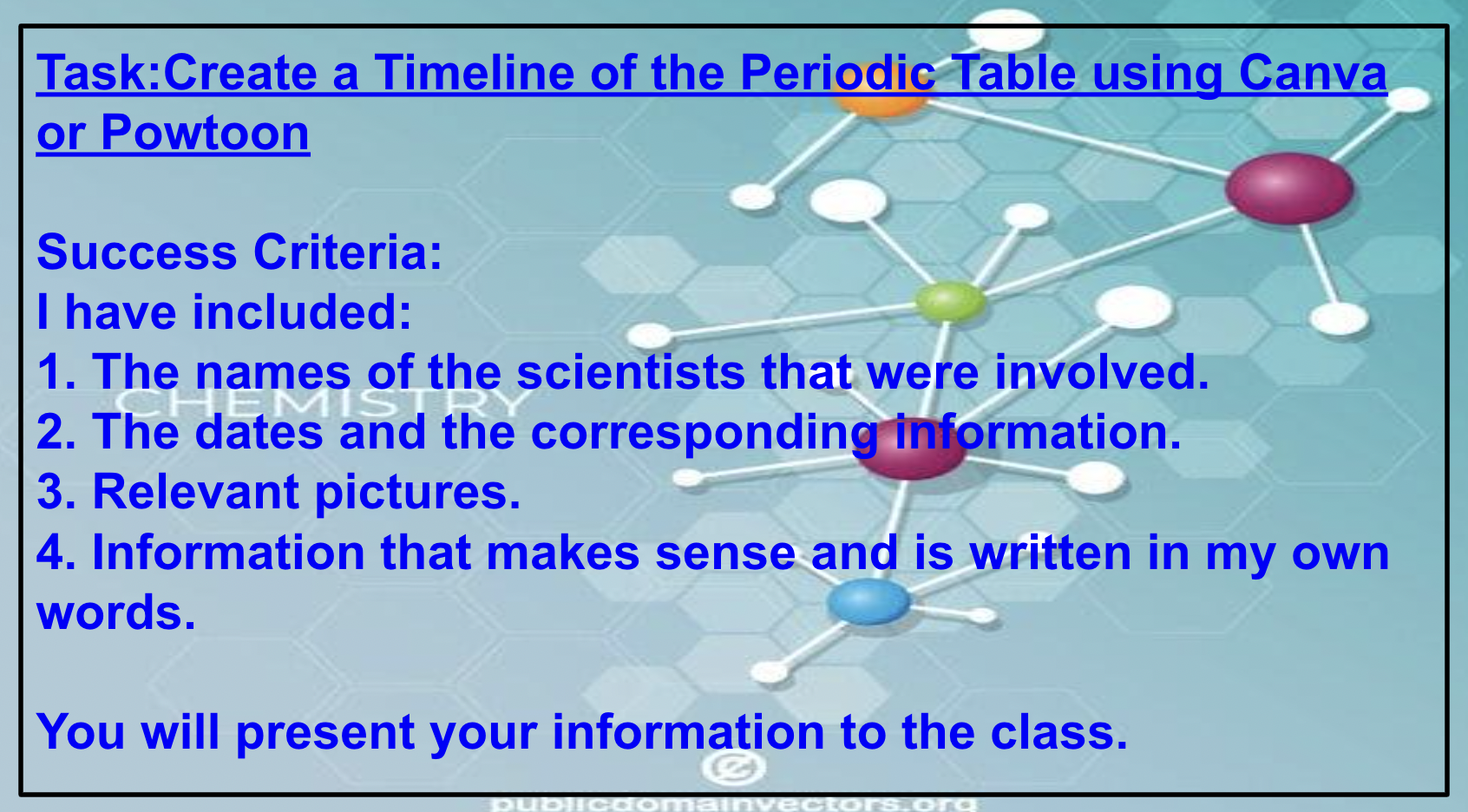
-
SCHOOL HOLIDAYS
-
SCHOOL HOLIDAYS
-
Kia Ora Students,
Welcome back, I hope that you all had a great holiday.
EXPLORE / TŪHURA learning intentions:
- We are EXPLORING... the context of “promoting kotahitanga" by understanding the interactions of the components in the universe.
Success Criteria: I can:
Explain how the universe began.
Discuss and describe the Big Bang Theory.
Rank the events as they happened in the formation of the solar system.
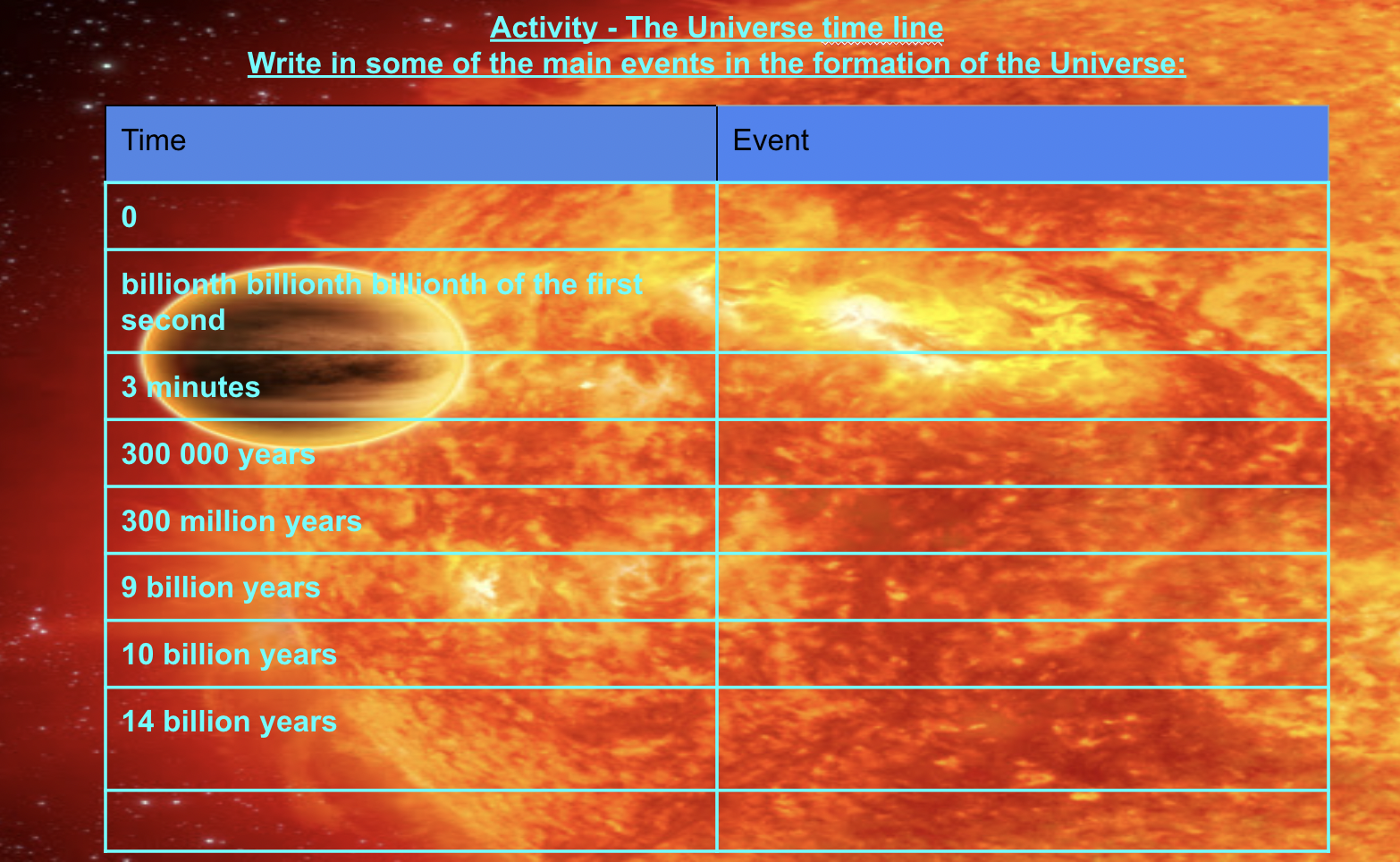
-
EXPLORE / TŪHURA learning intentions:
- We are EXPLORING...the context of ‘kotahitanga’ by comparing gravity, mass & weight and investigating how craters form.
Success Criteria
Define gravity, mass and weight
Calculate mass or weight by using gravitational field strength
Explain how craters form on surfaces.
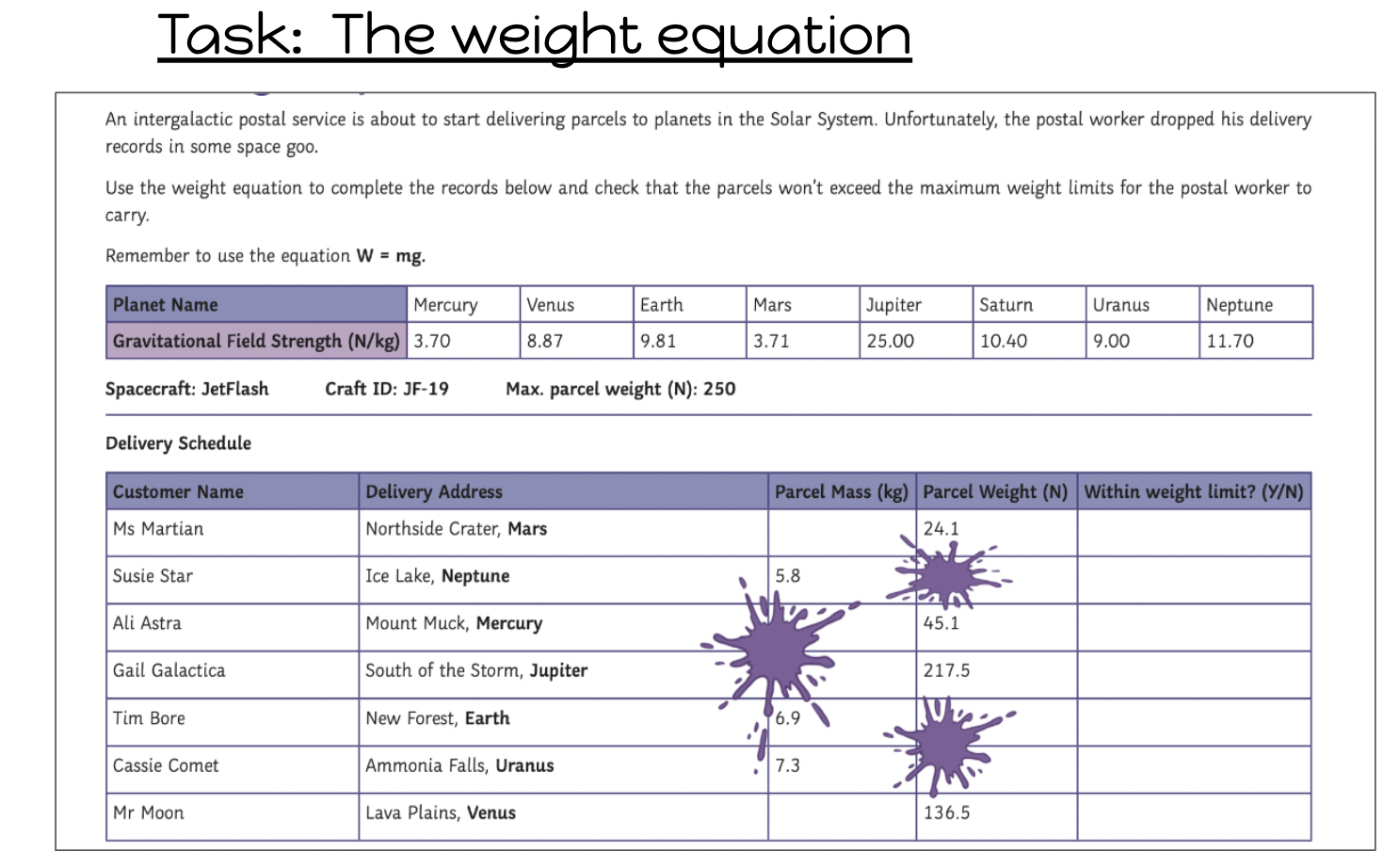
- We are EXPLORING...the context of ‘kotahitanga’ by comparing gravity, mass & weight and investigating how craters form.
-
Kia Ora Students,
EXPLORE / TŪHURA learning intentions:
- We are EXPLORING...the context of ‘kotahitanga; by describing planet earth, its movements and effects.
Success Criteria
Explain the difference between rotation and revolution.
Draw a diagram to explain how seasons occur.
Compare and contrast between the earth, sun and moon.
State the causes of solar and lunar eclipses.

- We are EXPLORING...the context of ‘kotahitanga; by describing planet earth, its movements and effects.
-
FOCUS / ARONGA learning intentions:
- We are FOCUSING...on the context of ‘kotahitanga’ by comparing the sun, earth and moon and their dependance/effects on each other.
Success Criteria
Identify the phases of the moon.
Explain the difference between a solar and lunar eclipse.
Describe how gravity (moon) causes high and low tide.
Draw the sun, moon and earth in orbit and according to scale.
Google Classroom - Link to Activities
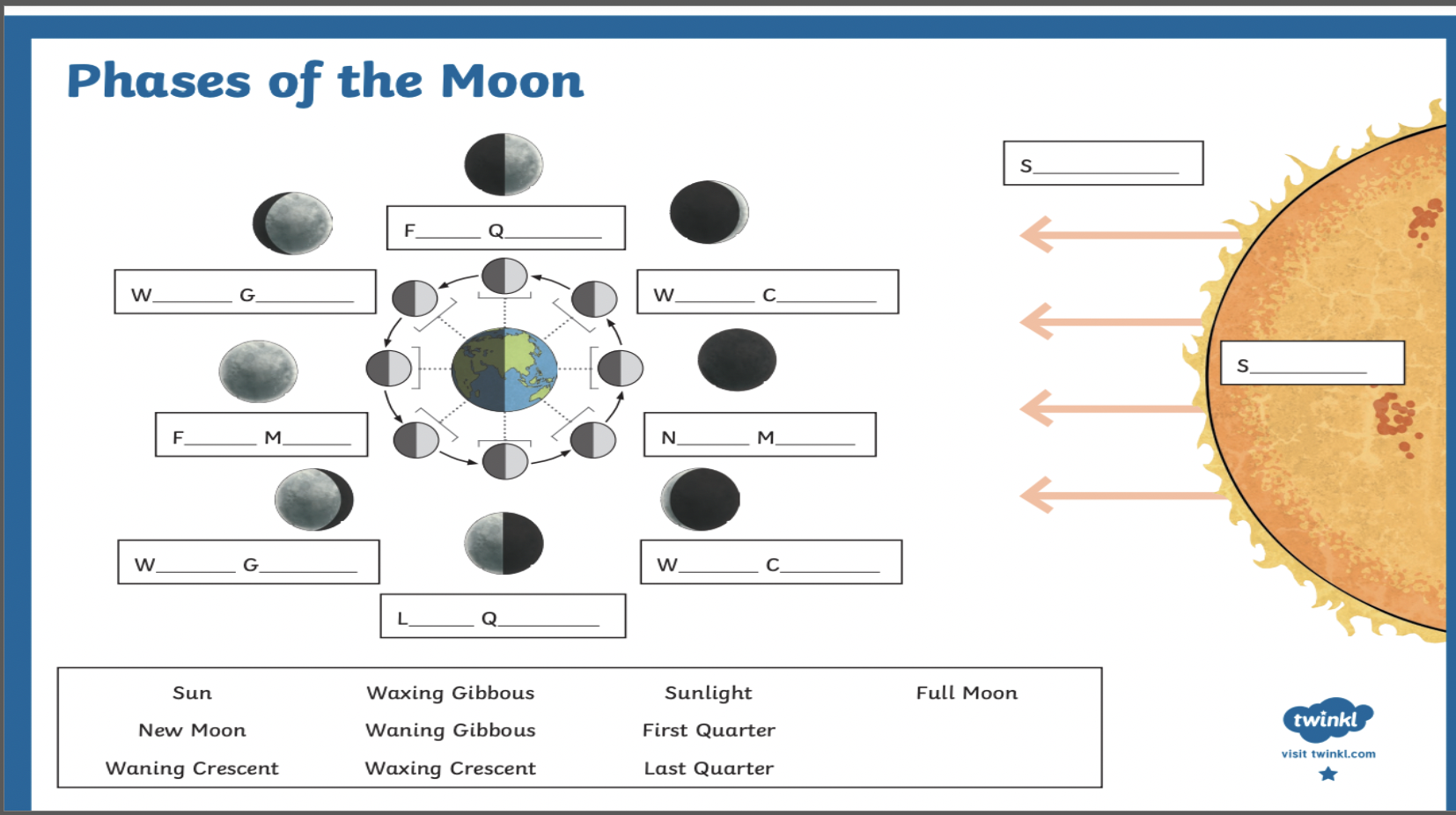
- We are FOCUSING...on the context of ‘kotahitanga’ by comparing the sun, earth and moon and their dependance/effects on each other.
-
FOCUS / ARONGA learning intentions:
- We are FOCUSING...on the context of ‘kotahitanga’by identifying and describing the layers of the Earth.
Success Criteria
Identify and draw each layer within the earth.
Describe the layers in detail.
Compare the layers and state similarities and differences

- We are FOCUSING...on the context of ‘kotahitanga’by identifying and describing the layers of the Earth.
-
Kia Ora Students,
This week and next we will be working on our assessments.
PLAN & DO / WHAKAMAHI learning intentions:
- We are PLANNING... apply our knowledge of the solar system so that we can...create information reports and 2D/3D models.
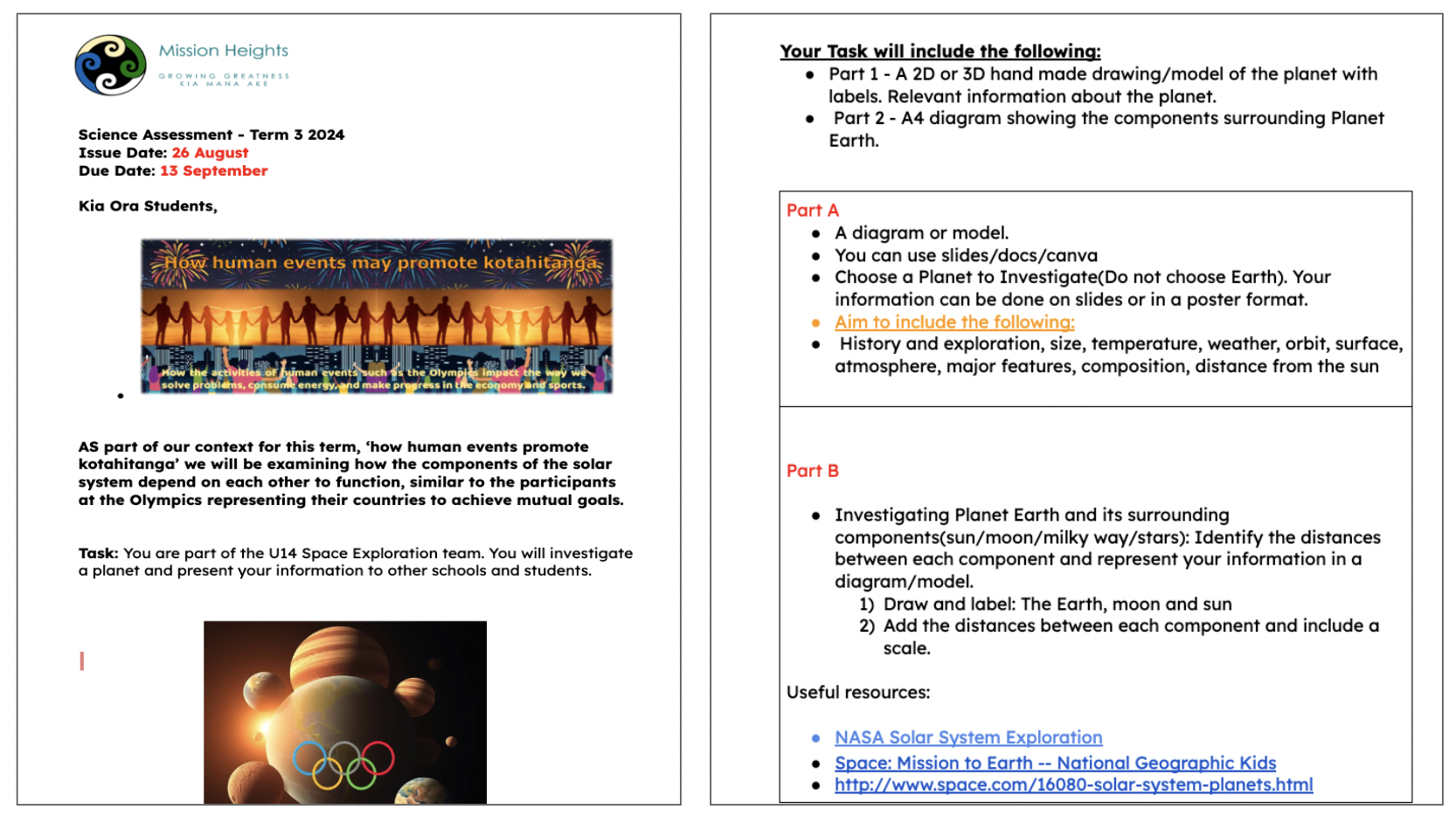
-
Kia Ora Students,
This week you will continue working on your assessments.
PLAN & DO / WHAKAMAHI learning intentions:
- We are PLANNING... apply our knowledge of the solar system so that we can...create information reports and 2D/3D models.

-
Kia Ora Students,
This week you will complete your assessments and submit them on MHJC online.
PLAN & DO / WHAKAMAHI learning intentions:
- We are PLANNING... apply our knowledge of the solar system so that we can...create information reports and 2D/3D models.

-
Kia ora Students
FOCUS / ARONGA learning intentions:
- We are FOCUSING...on investigating the planets of the solar system so that we can appreciate their purpose.
- Success Criteria
Identify and describe each planet.
Locate planets according to the distance from the sun.
Compare and contrast planets: temperature, day length, climate, surface composition.
Illustrate each stage in the formation of the solar system
Google Classroom - Link to Activities
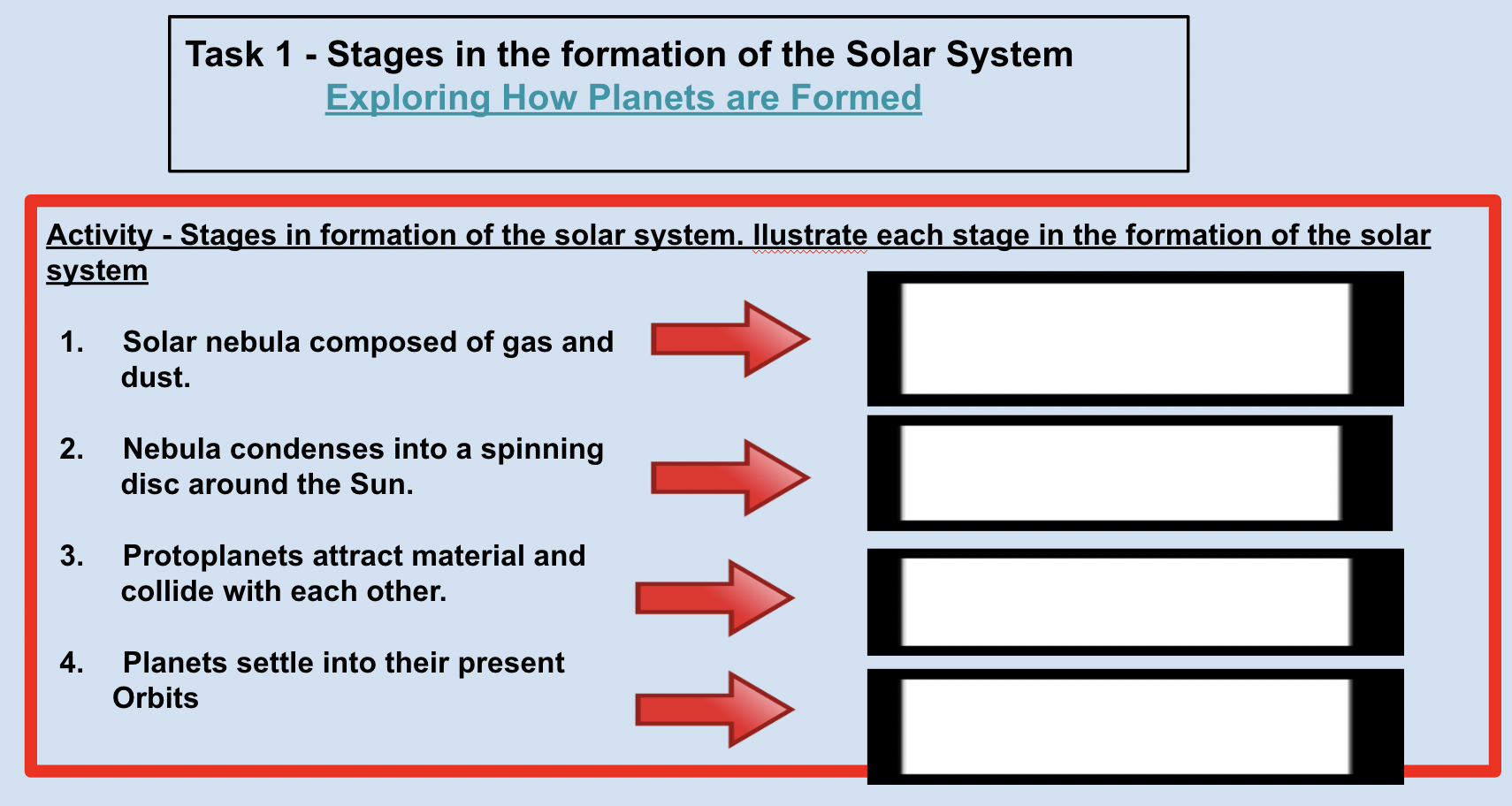
-
Kia ora Students,
EXPLORE / TŪHURA learning intentions
We are EXPLORING...the context of Kotahitanga by investigating clouds and understanding their purpose in our surrounding environment.
Success Criteria
Explain how clouds are formed
Identify and name different types of clouds
Compare and contrast the different types of clouds.
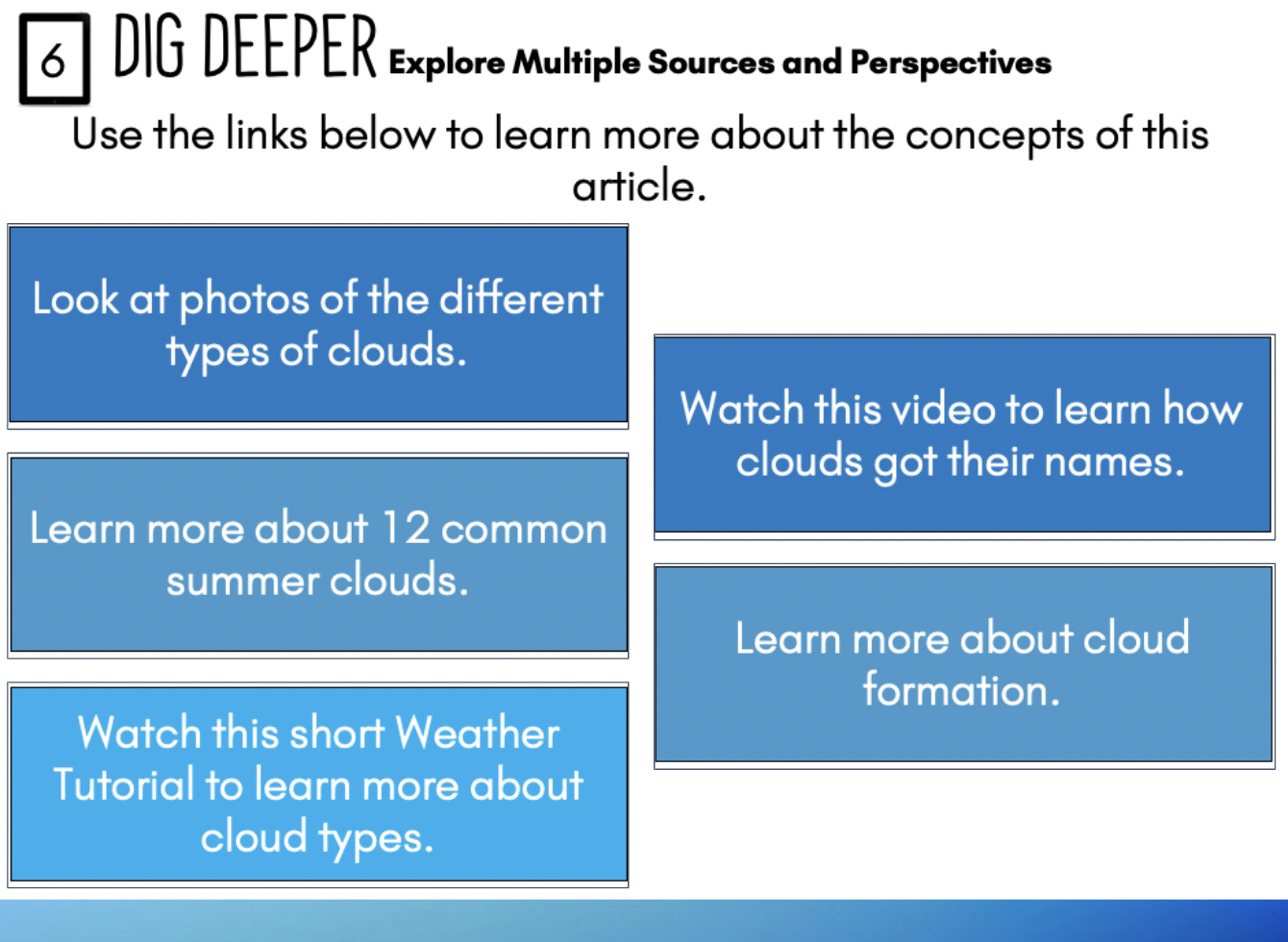
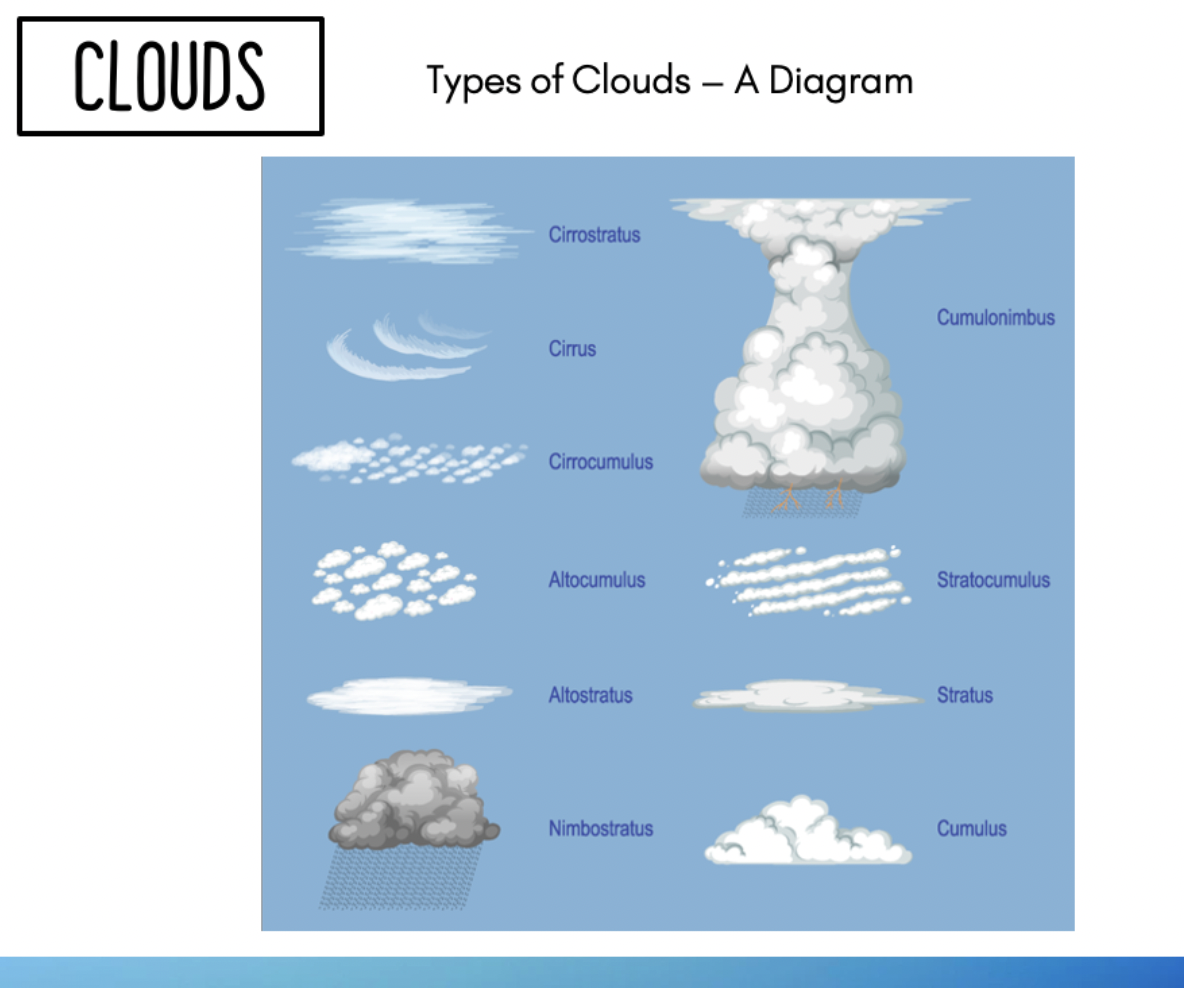
-
SCHOOL HOLIDAYS
-
SCHOOL HOLIDAYS
-
Kia Ora Students
Welcome back to term 4.
EXPLORE / TŪHURA learning intentions:
- We are EXPLORING... the context of sustainability by classifying our digestive system.
- Success Criteria
Identify all the parts involved in the digestion of food.
Draw and label the digestive system.
Compare and contrast the various parts of the digestive tract.
Name the nutrients and state their function.
Google Classroom - Link to Activities
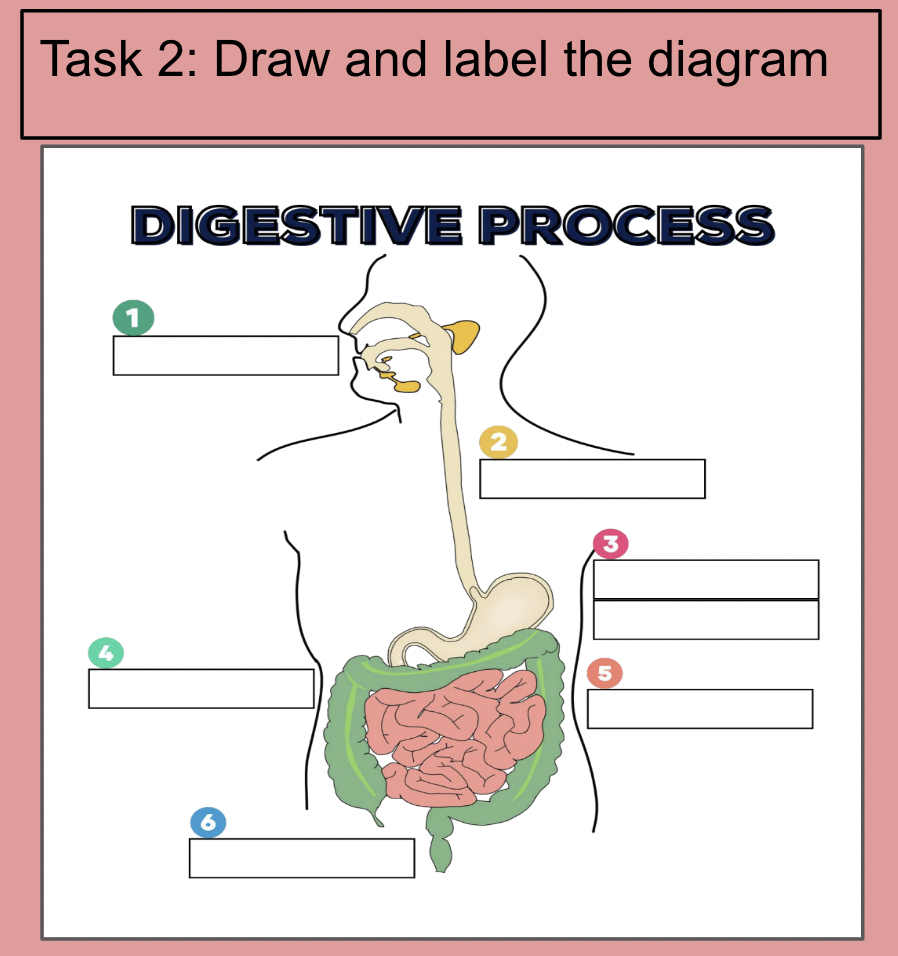
- We are EXPLORING... the context of sustainability by classifying our digestive system.
-
EXPLORE / TŪHURA learning intentions:
- We are EXPLORING...the context of sustainability by analysing human teeth according to their functions.
- Success Criteria
Identify and describe the types of teeth.
Draw and label a tooth and explain the purpose of each label.
Name the problems associated with poor oral hygiene and describe the effects on teeth.
Describe the structure of the tongue, including taste buds, muscles, and papillae.
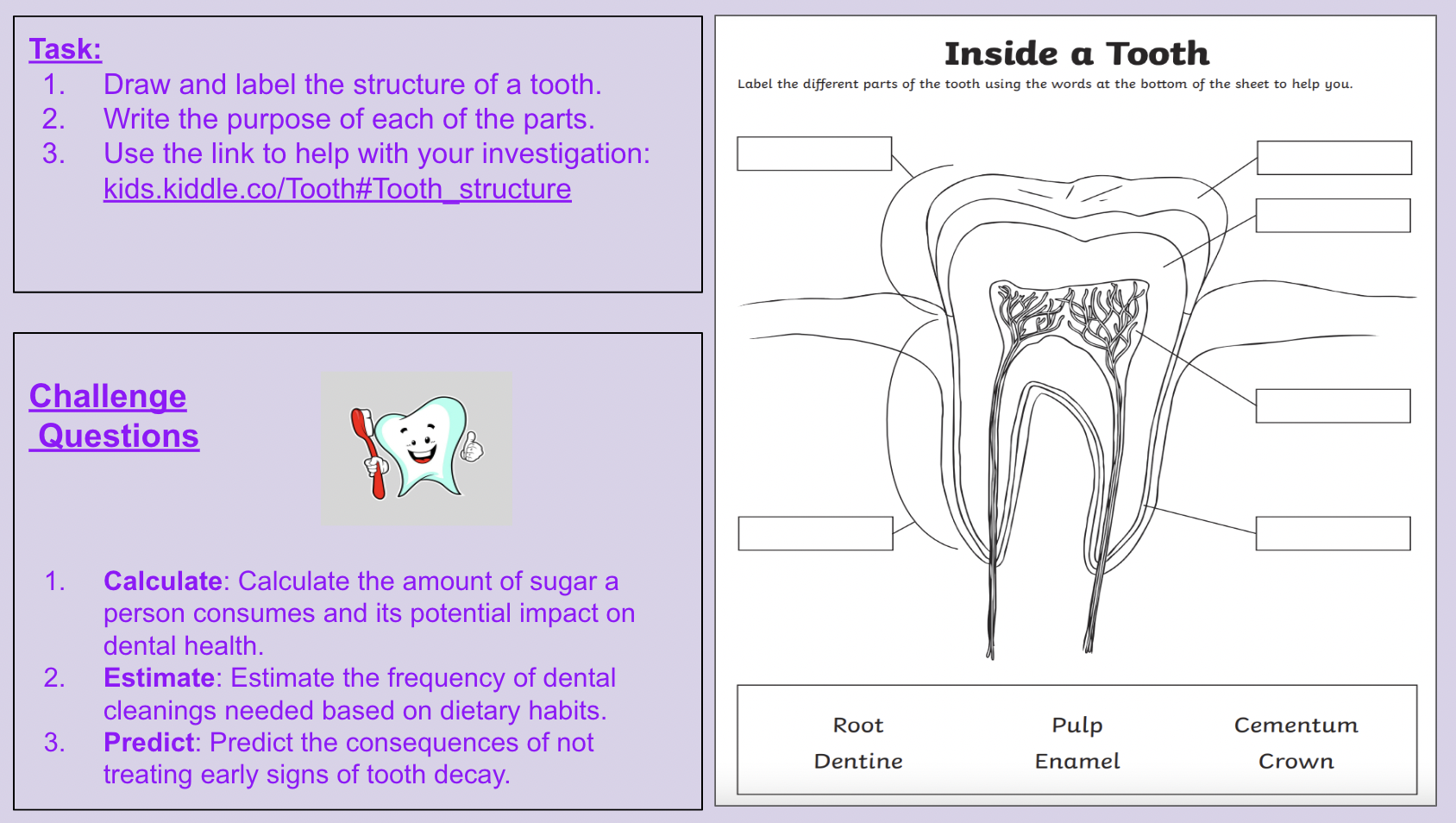
- We are EXPLORING...the context of sustainability by analysing human teeth according to their functions.
-
Kia Ora Students,
Welcome to week 3
We are exploring the context of celebrations by Investigating the purpose and function of the oesophagus
I can/have….
Discuss the main functions of the oesophagus
Explain some “fun facts” about the oesophagus
Google Classroom - Link to Activities
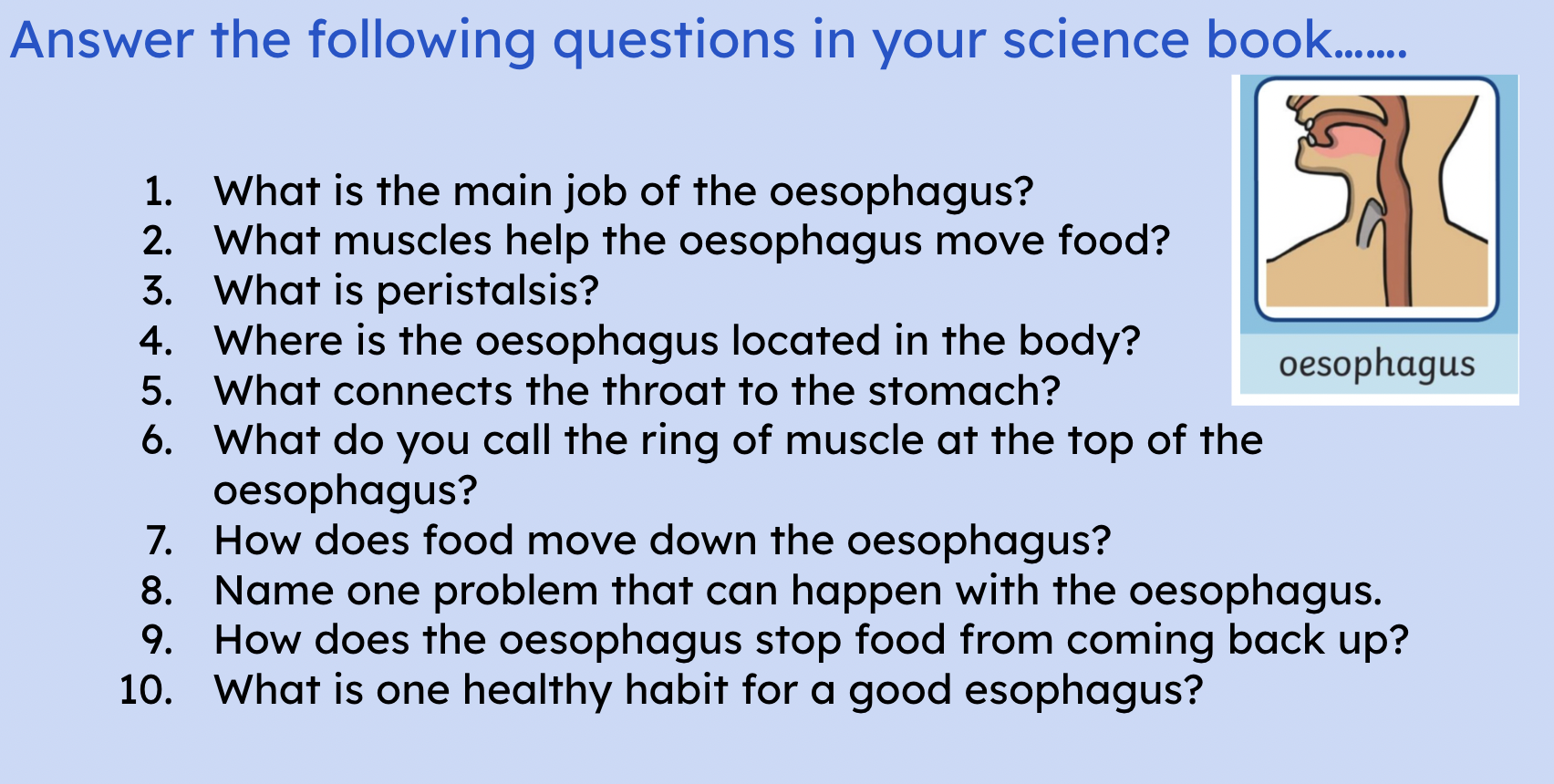
-
FOCUS / ARONGA learning intentions:
- We are FOCUSING...on the context of cultural diversity by identifying the parts of the stomach and the functions to support the digestive process.
- Success Criteria
- 1. Label parts of the stomach
- 2.Explain the foods path in the stomach
- 3.Discuss how to keep my stomach healthy
Google Classroom - Link to Activities
-
FOCUS / ARONGA Learning Intentions:
We are focusing on the context of cultural diversity by understanding how different cultures approach the care of the stomach and digestive health.
Success Criteria
Label parts of the stomach
Explain the foods path in the stomach
Discuss how to keep my stomach healthy
Compare and contrast the human and ruminant digestive systems.
Outline the environmental impacts of ruminants.
- Google Classroom - Link to Activities
-
FOCUS / ARONGA Learning Intentions:
We are focusing on the context of cultural diversity by exploring how the digestive systems of various animals adapt to their environments and diets.
Success Criteria
* Discuss how to keep my stomach healthy
- Compare and contrast the human and ruminant digestive systems.
- Outline the environmental impacts of ruminants.
- Google Classroom - Link to Activities
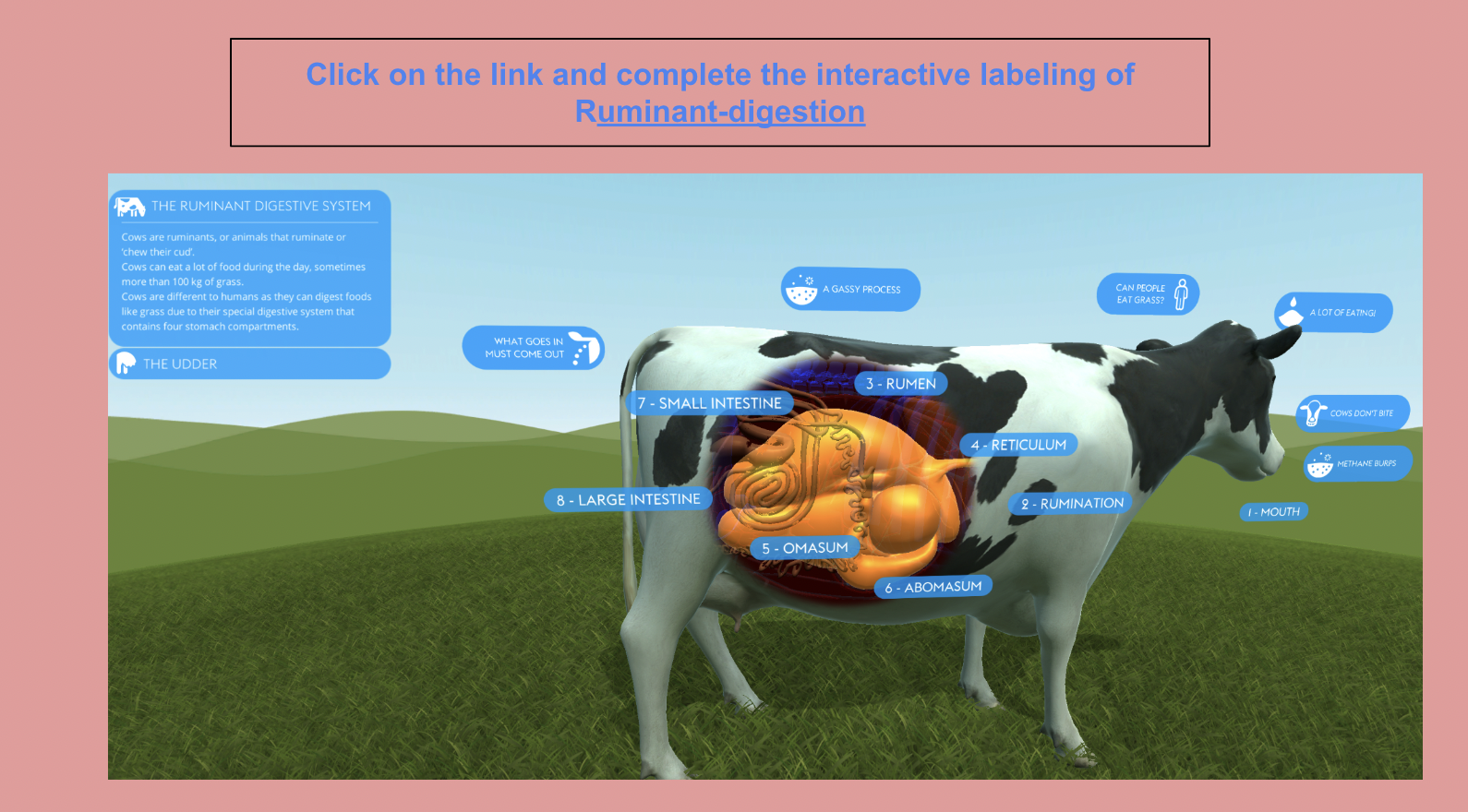
-
EXPLORE / TŪHURA learning intentions:
- We are EXPLORING...the context of celebrations by investigating the small intestine based on the food that is needed to be digested.
- Success Criteria
1. Discuss the functions and structure of the small intestine.
2. Identify common intestinal conditions.
3. Research intestinal tests.
4. Discover how to keep your intestine healthy.
Google Classroom - Link to Activities
-
Week 8 and 9
EXPLORE / TŪHURA learning intentions:
- We are EXPLORING...the context of celebrations by investigating the role of the large intestine during digestion.
- We are PLANNING to do research on nutritional deficiencies to understand the impacts of unhealthy eating on our bodies.
- Success Criteria
Draw and label the large intestine
Discuss the function of the large intestine
Explain how to keep my large intestine health
Explain the difference between complex and simple carbohydrates, with examples.
Design a balanced meal inclusive of the RDA of each nutrient.
Construct a food pyramid.
Produce research on nutritional deficiencies found in children.
Google Classroom - Link to Activities
Google Classroom - Link to Activities

